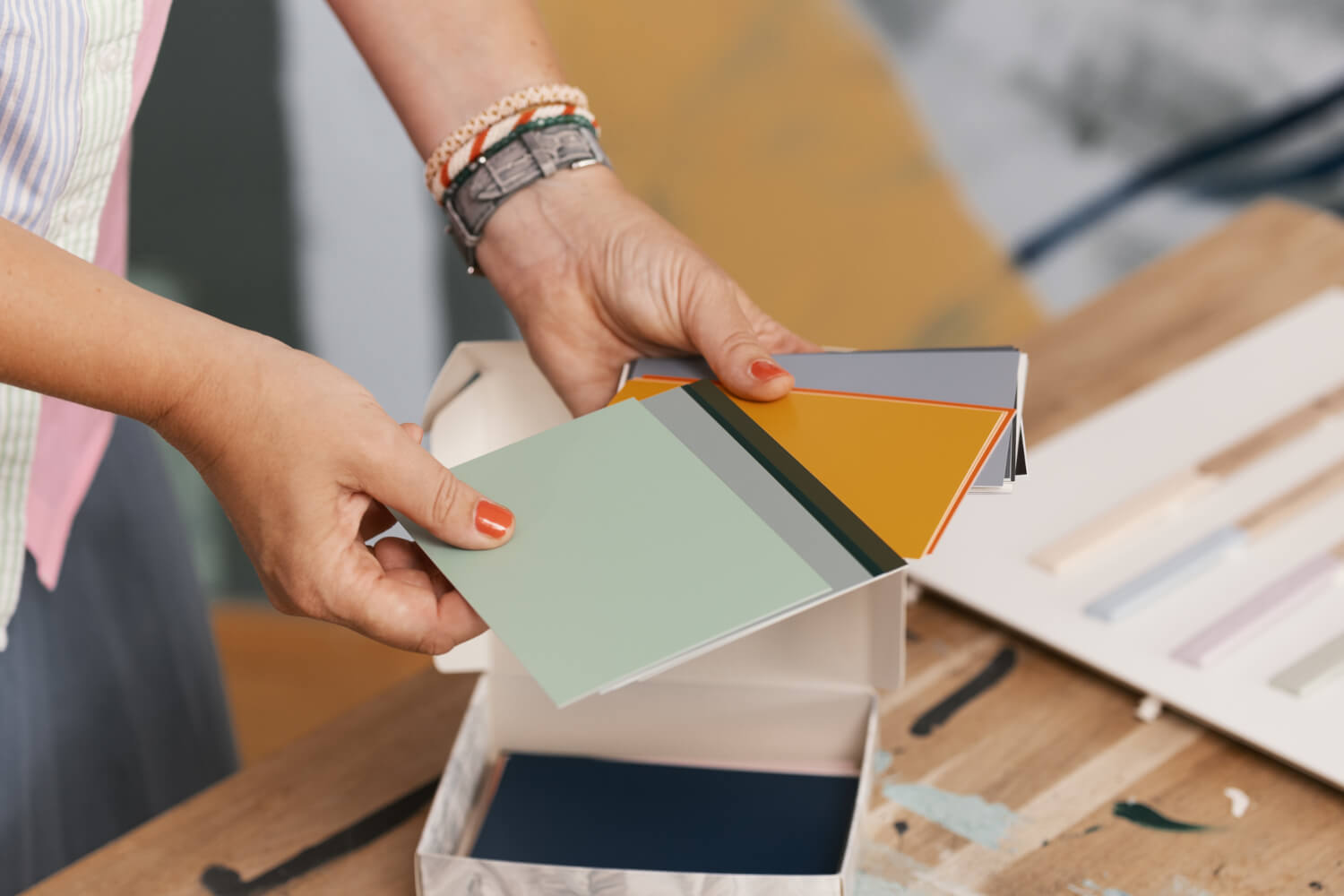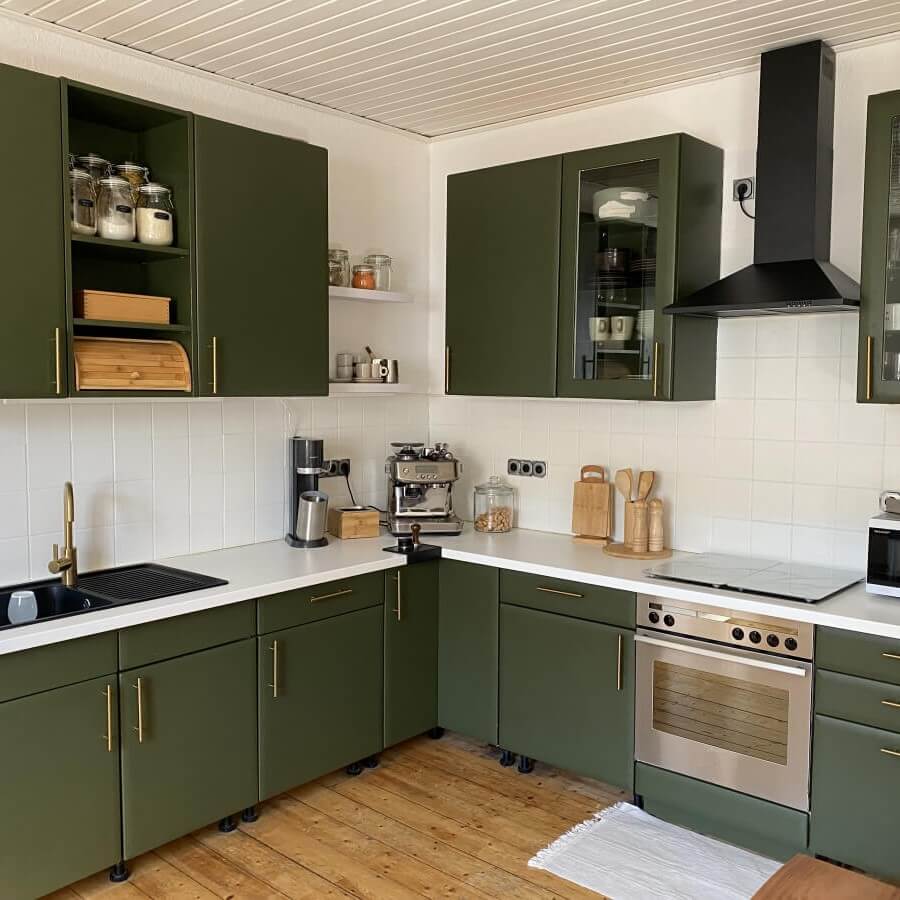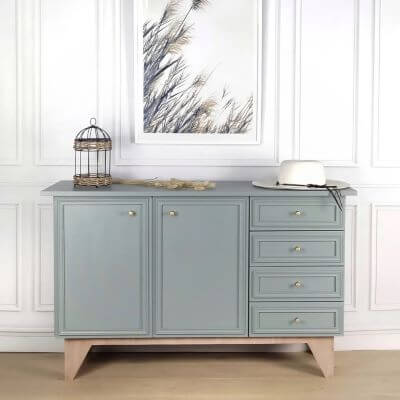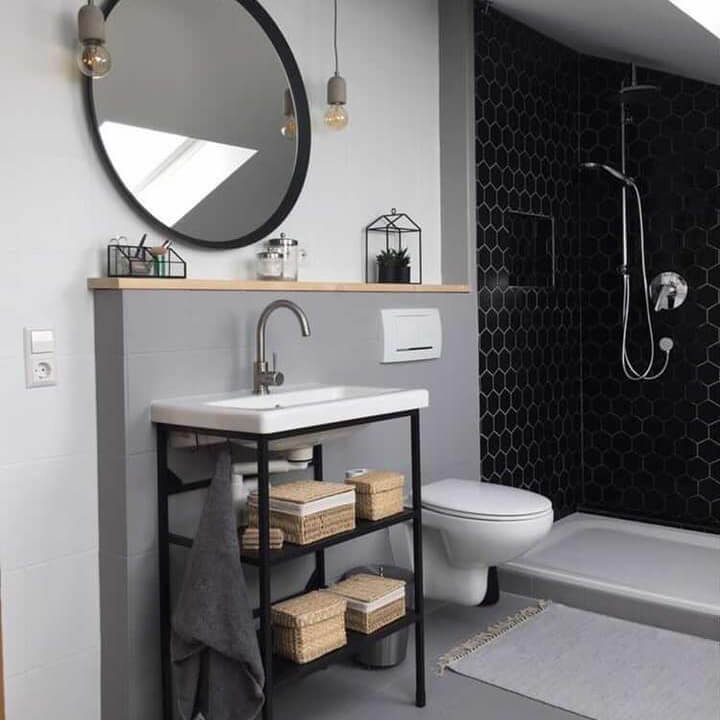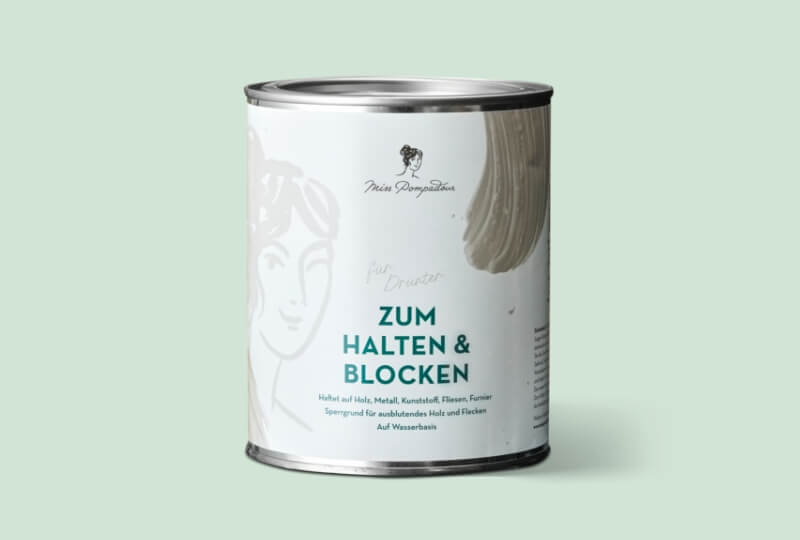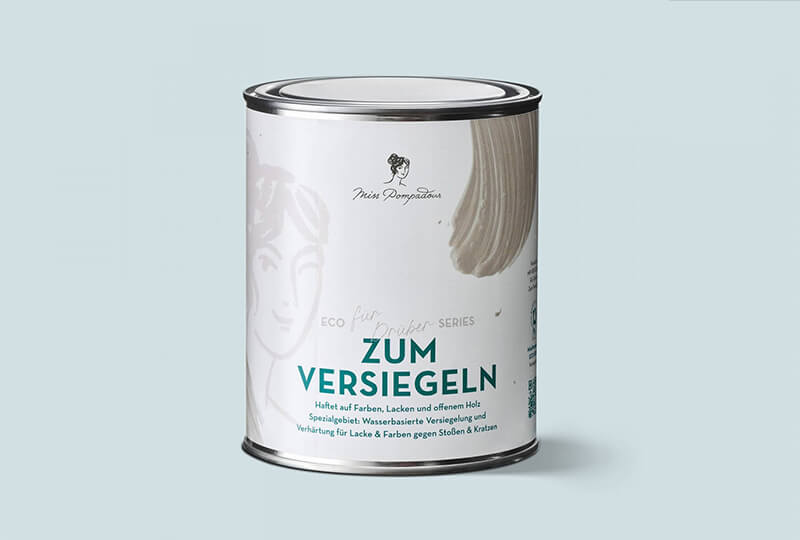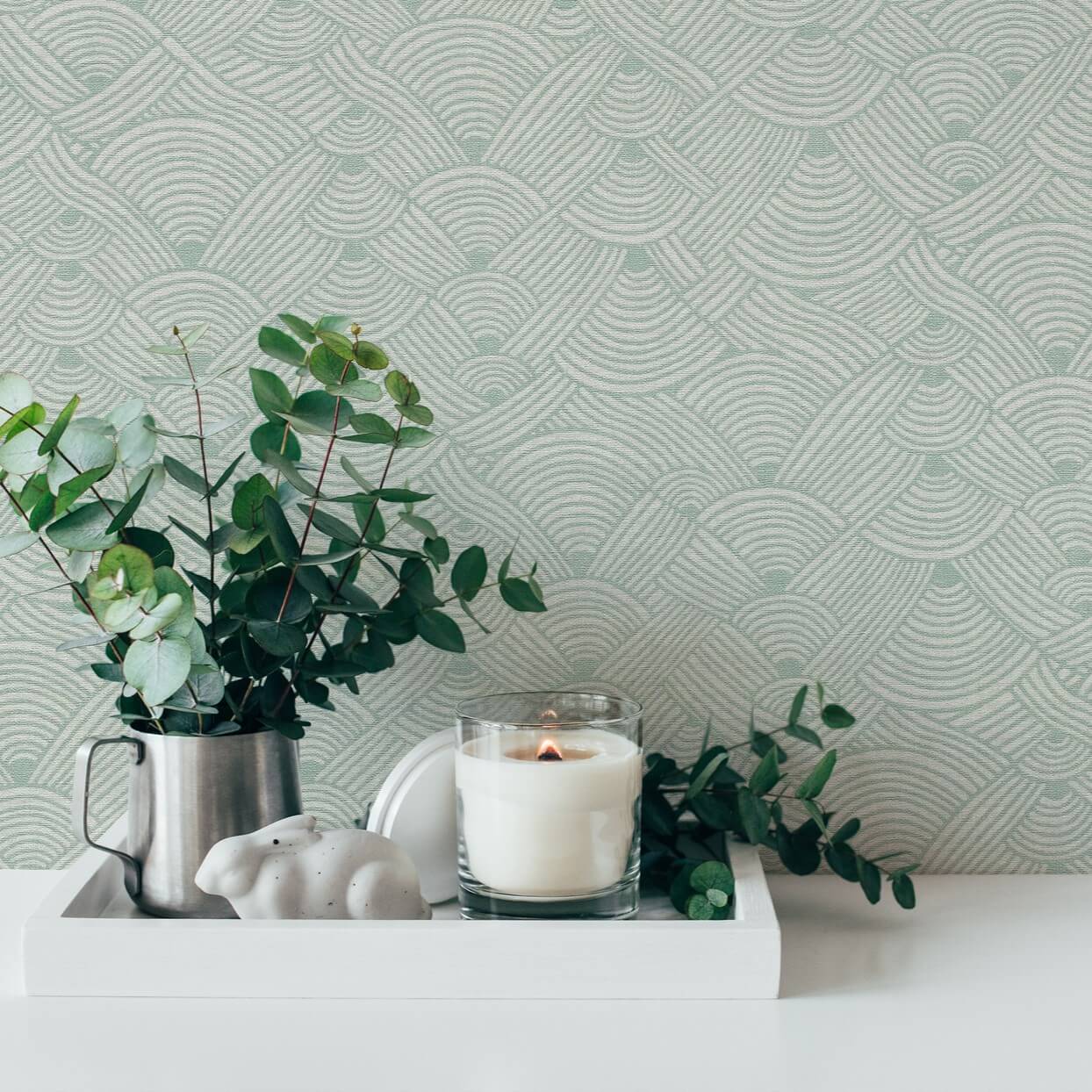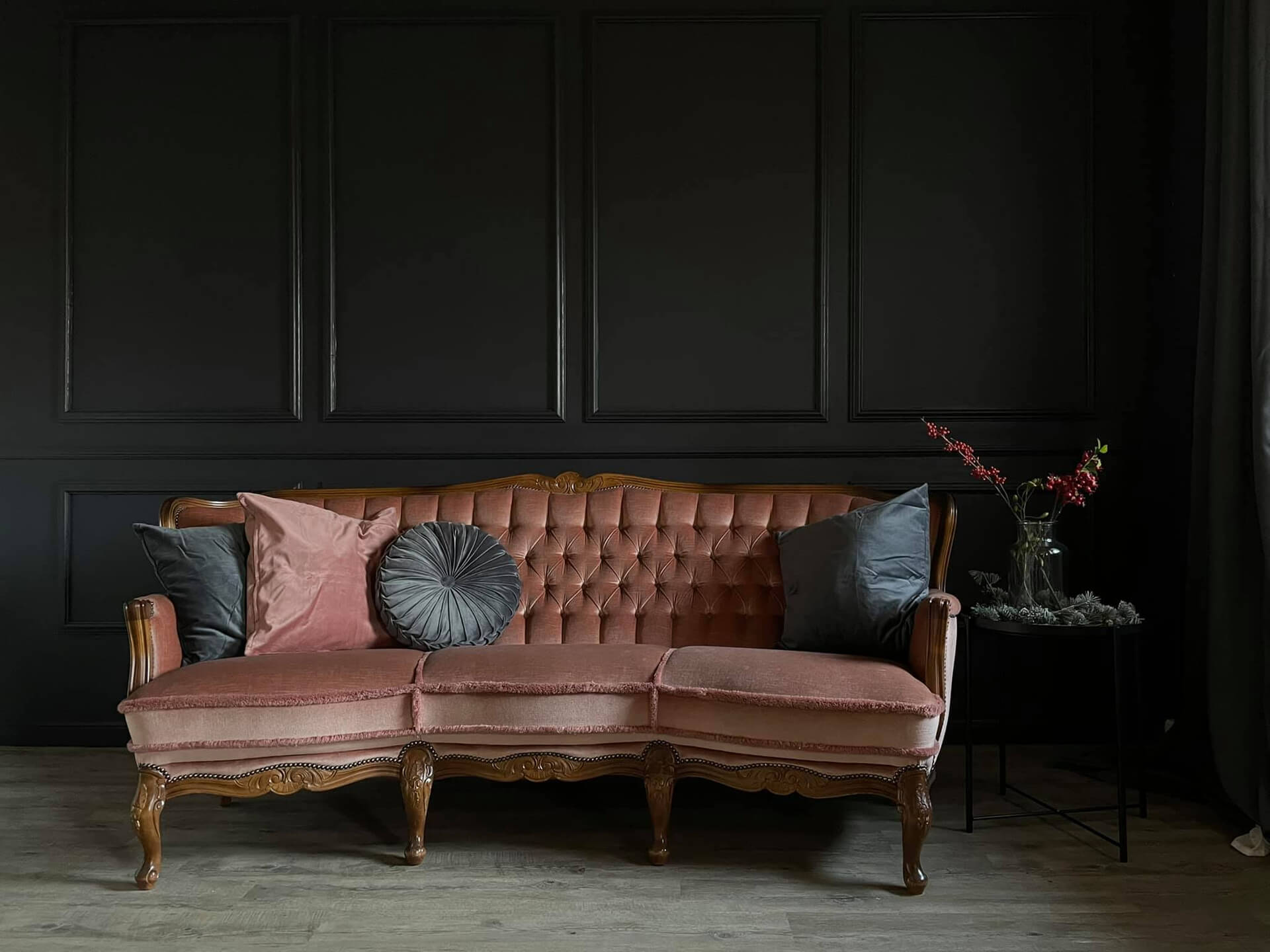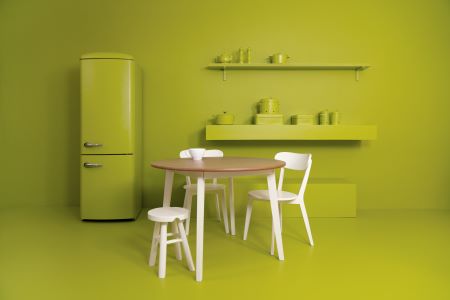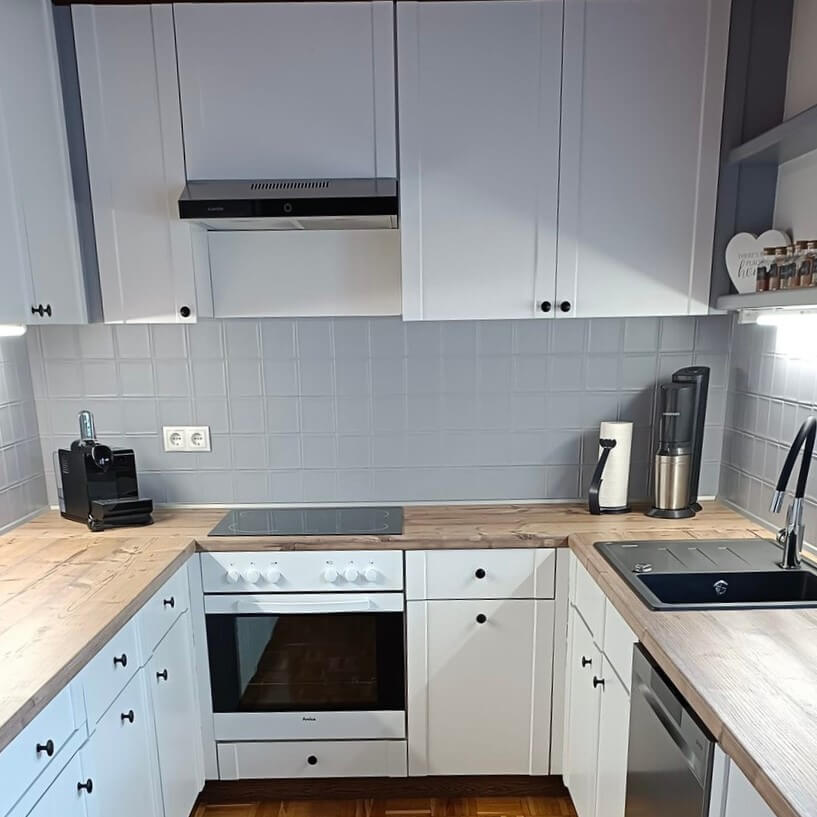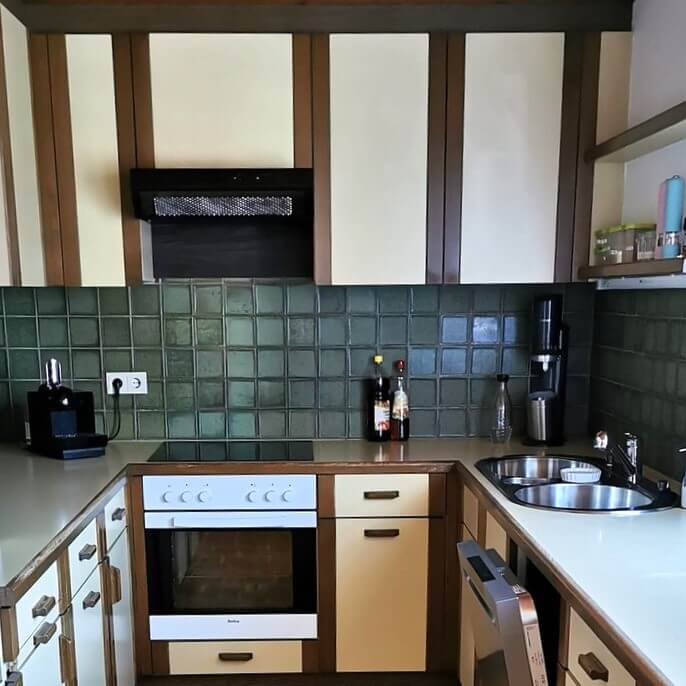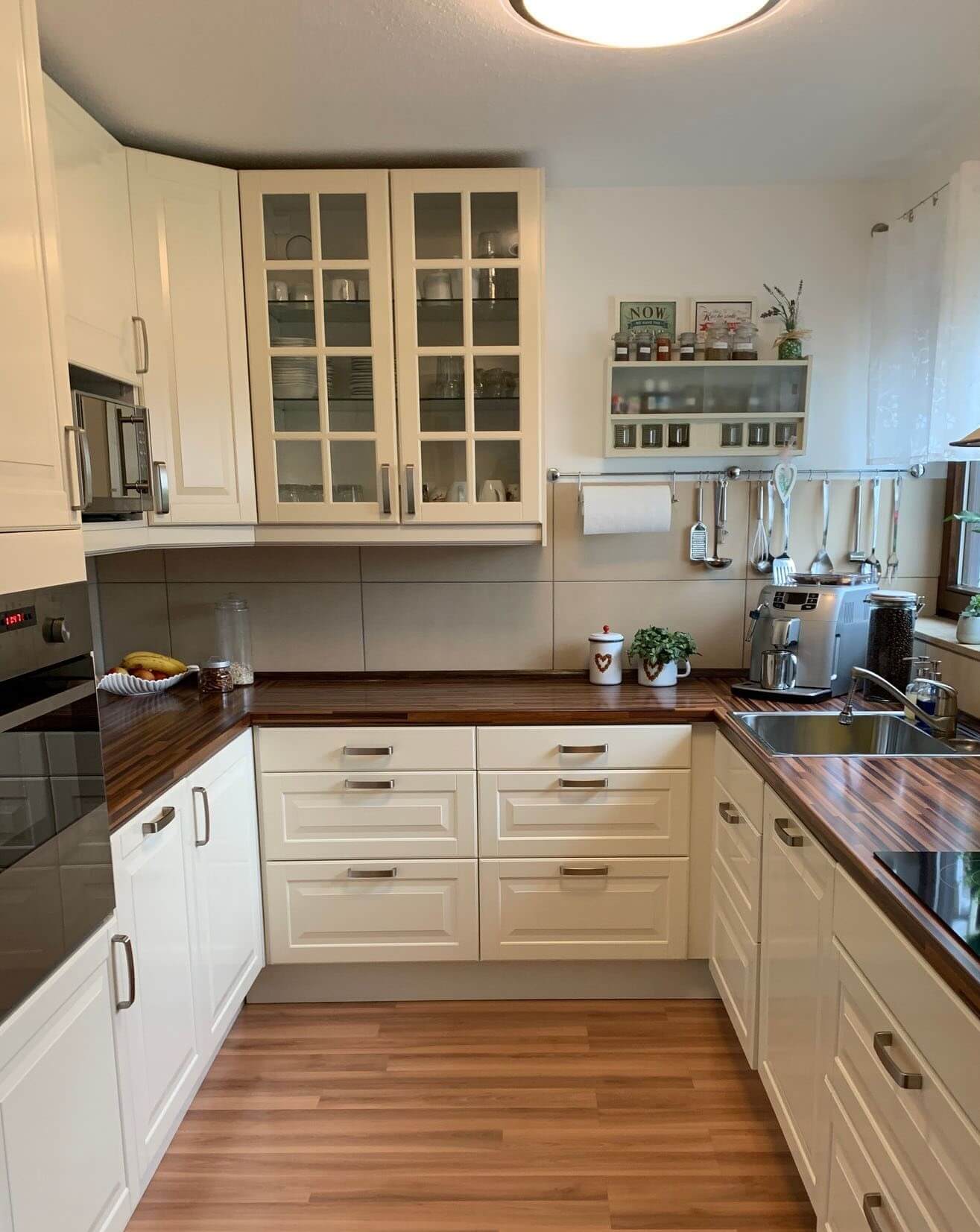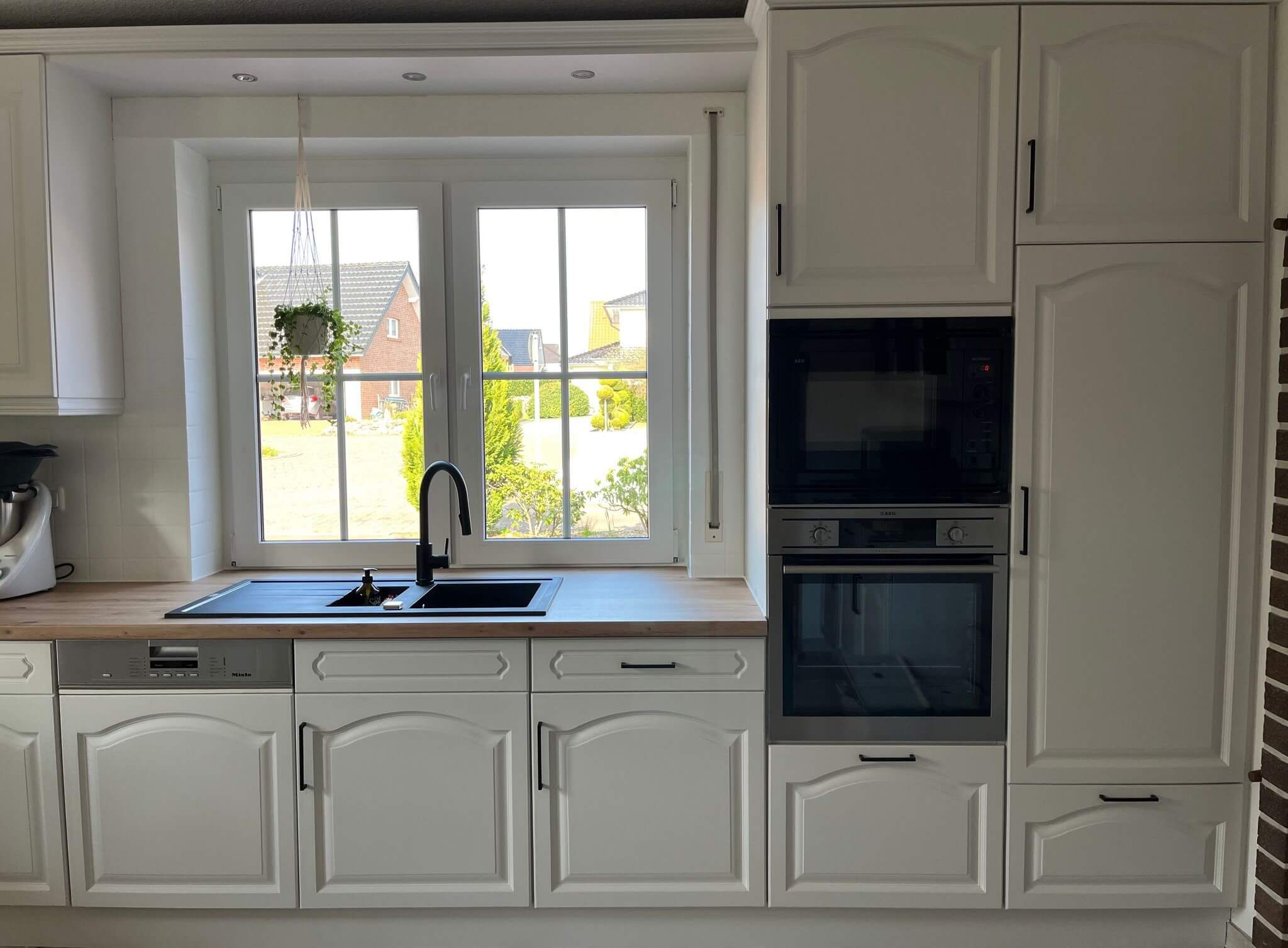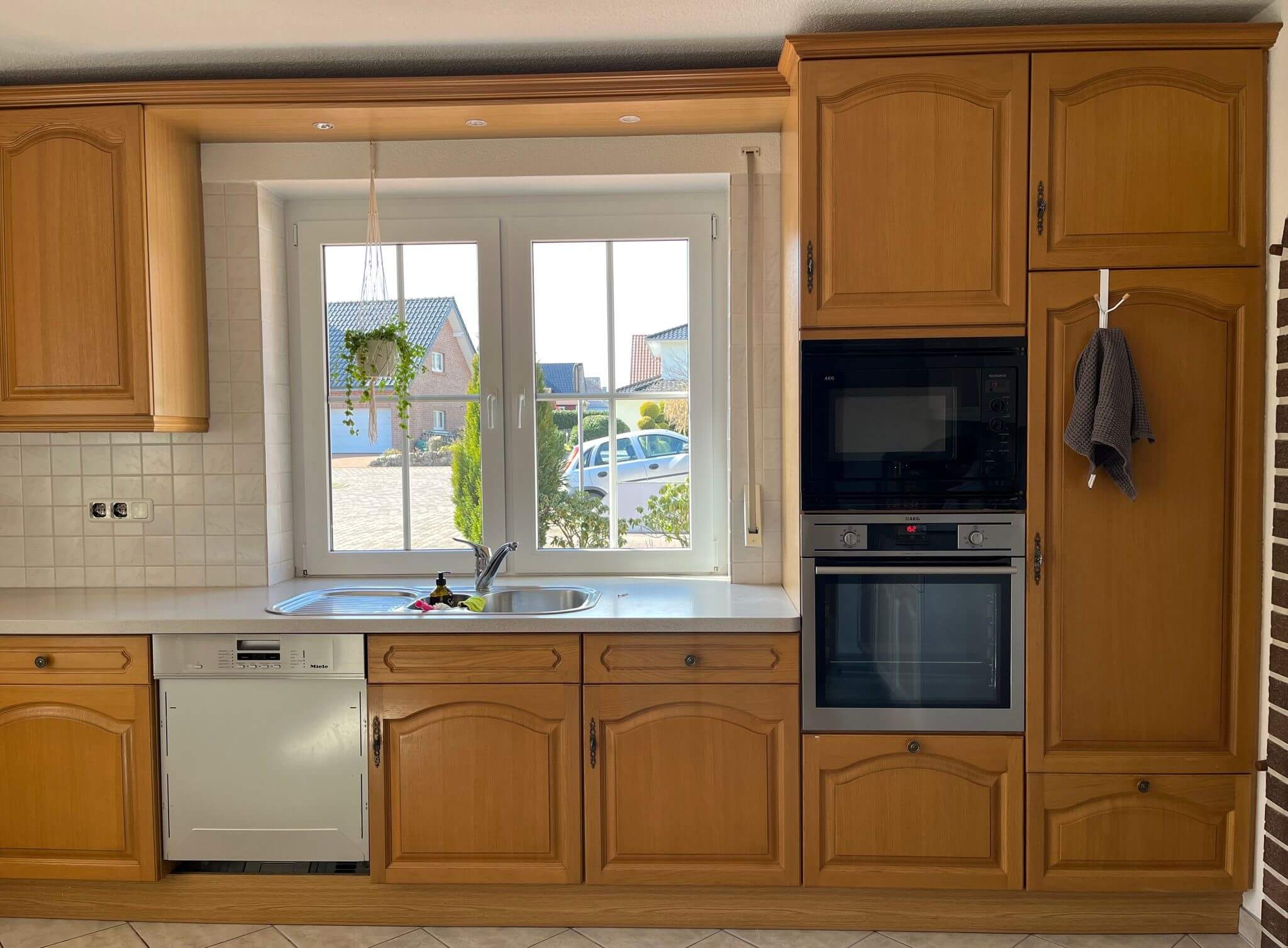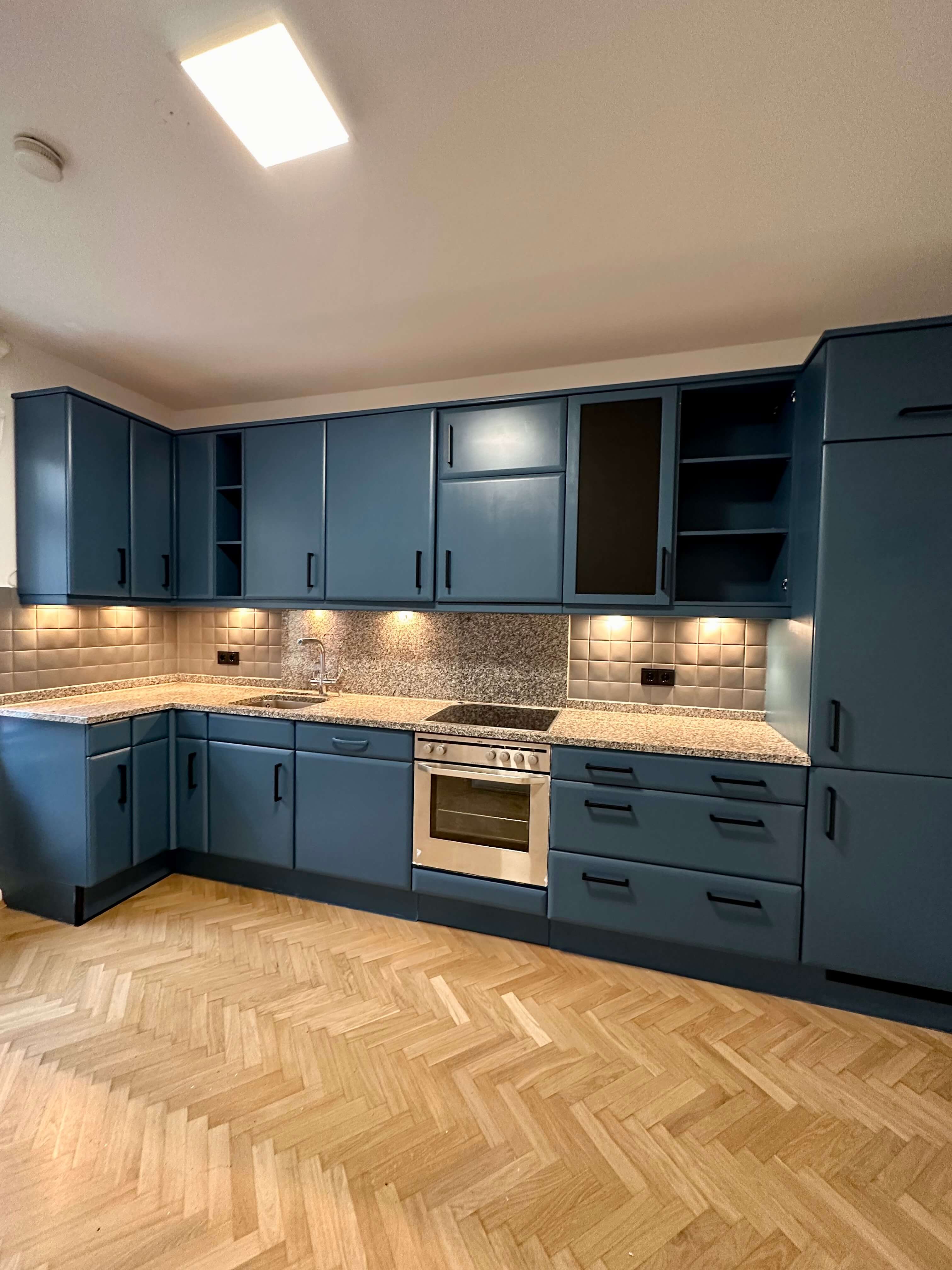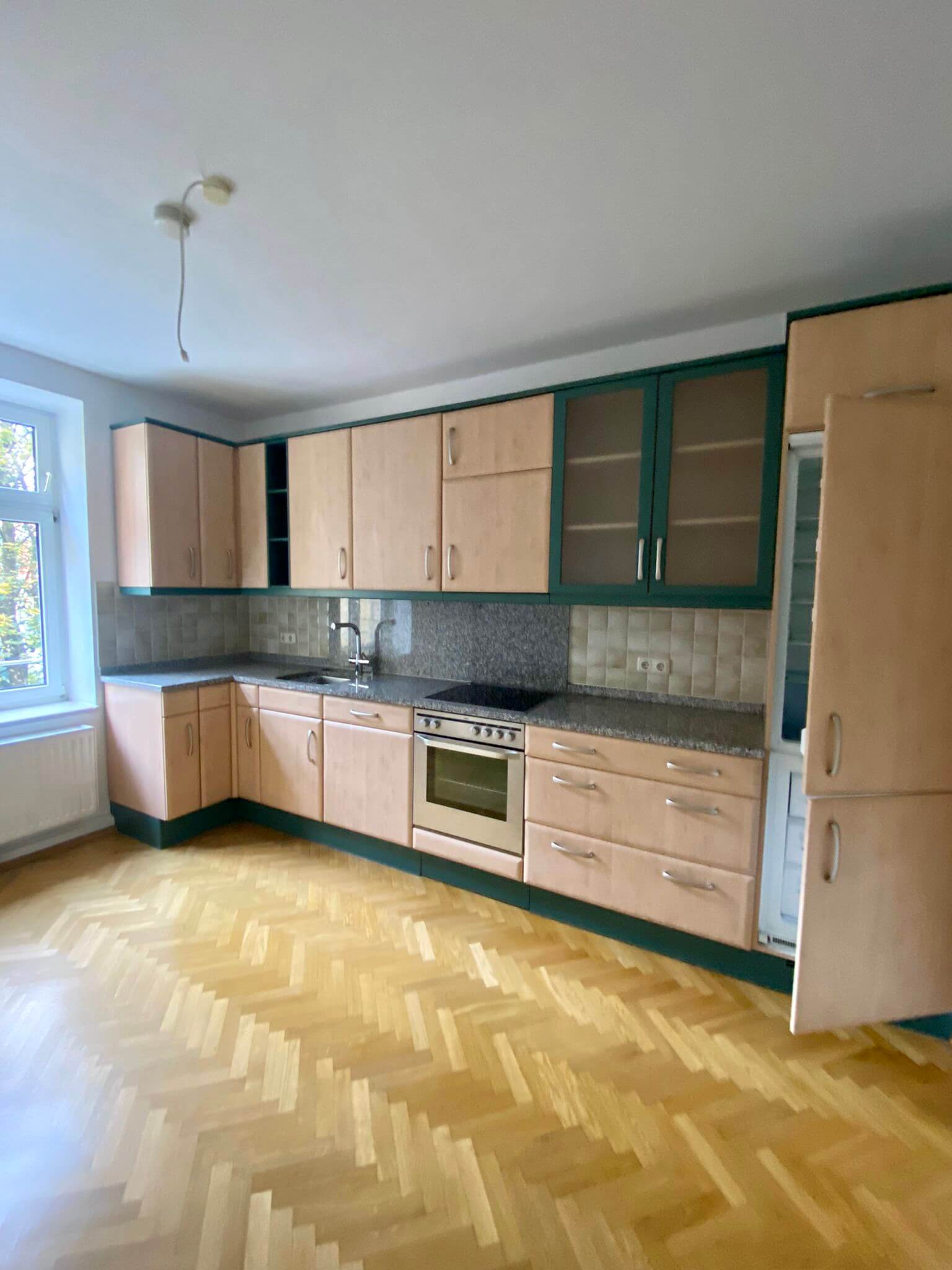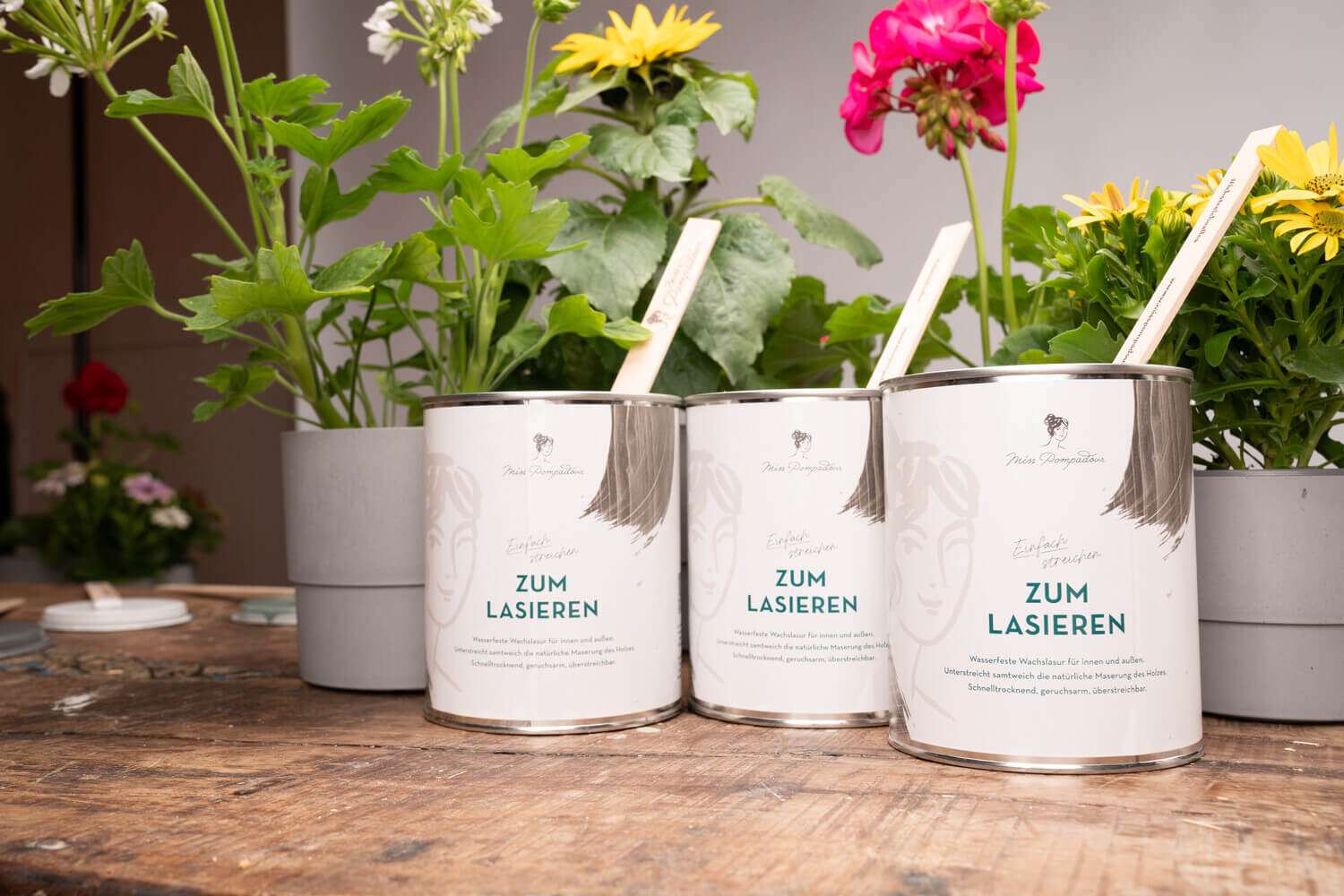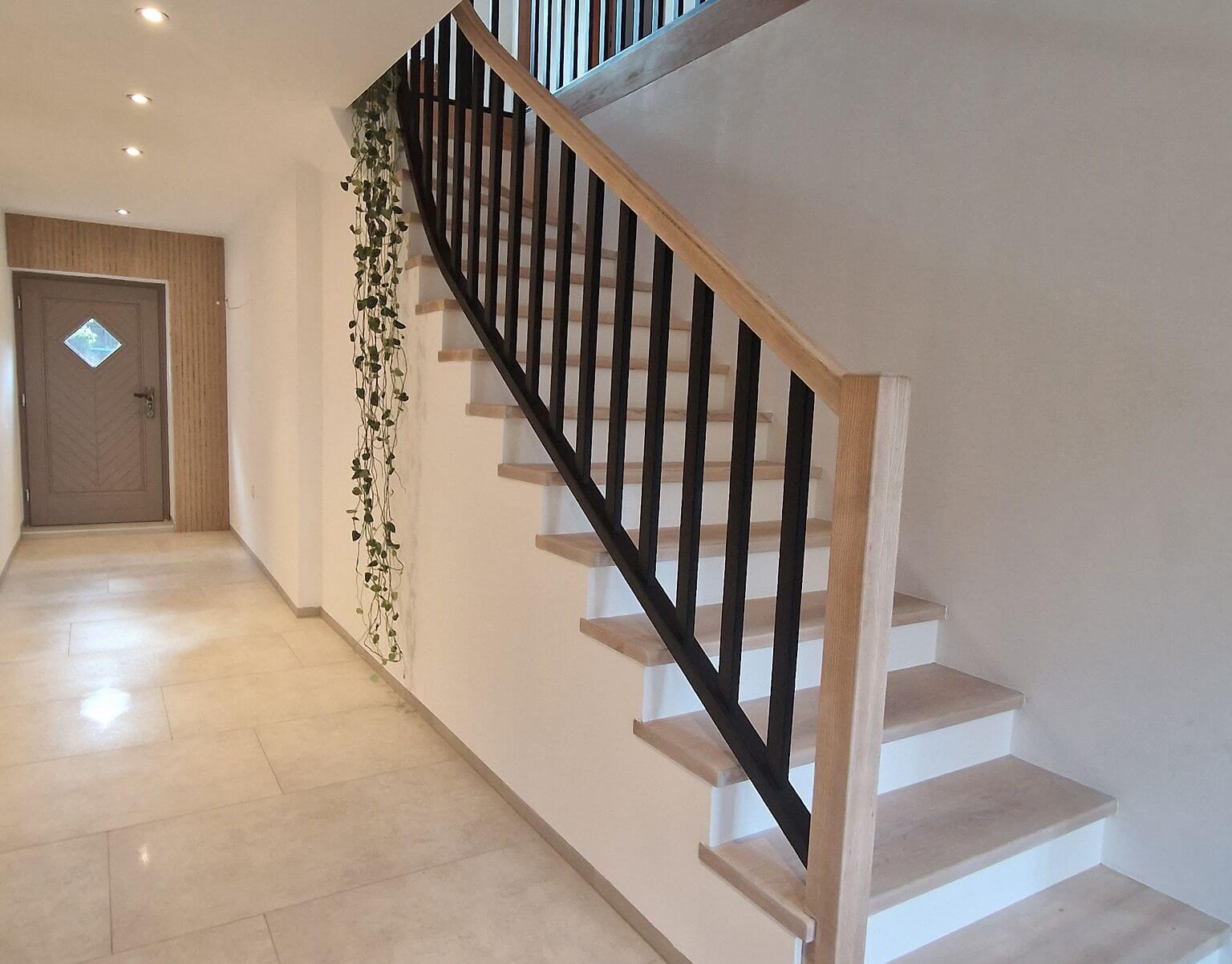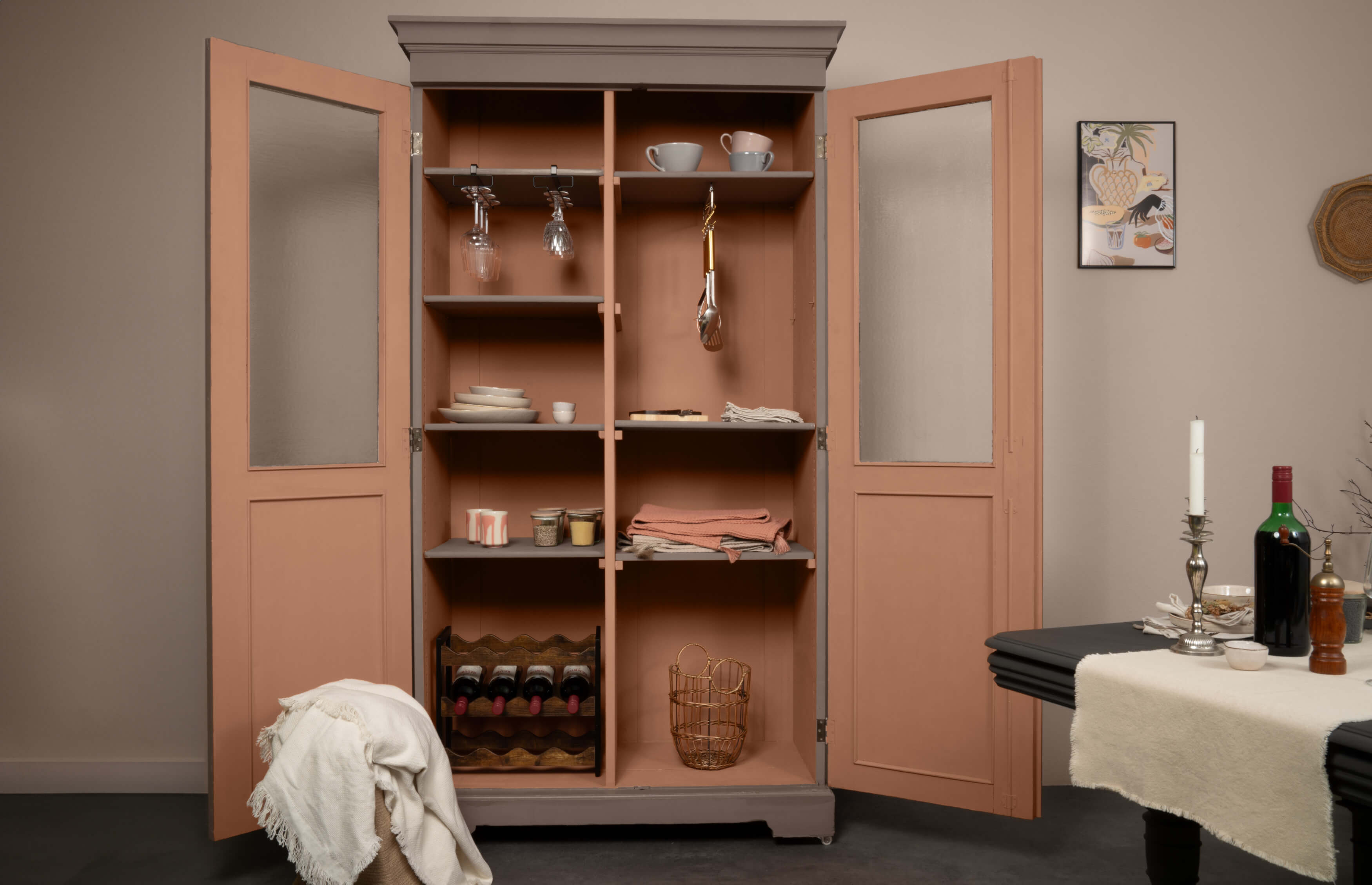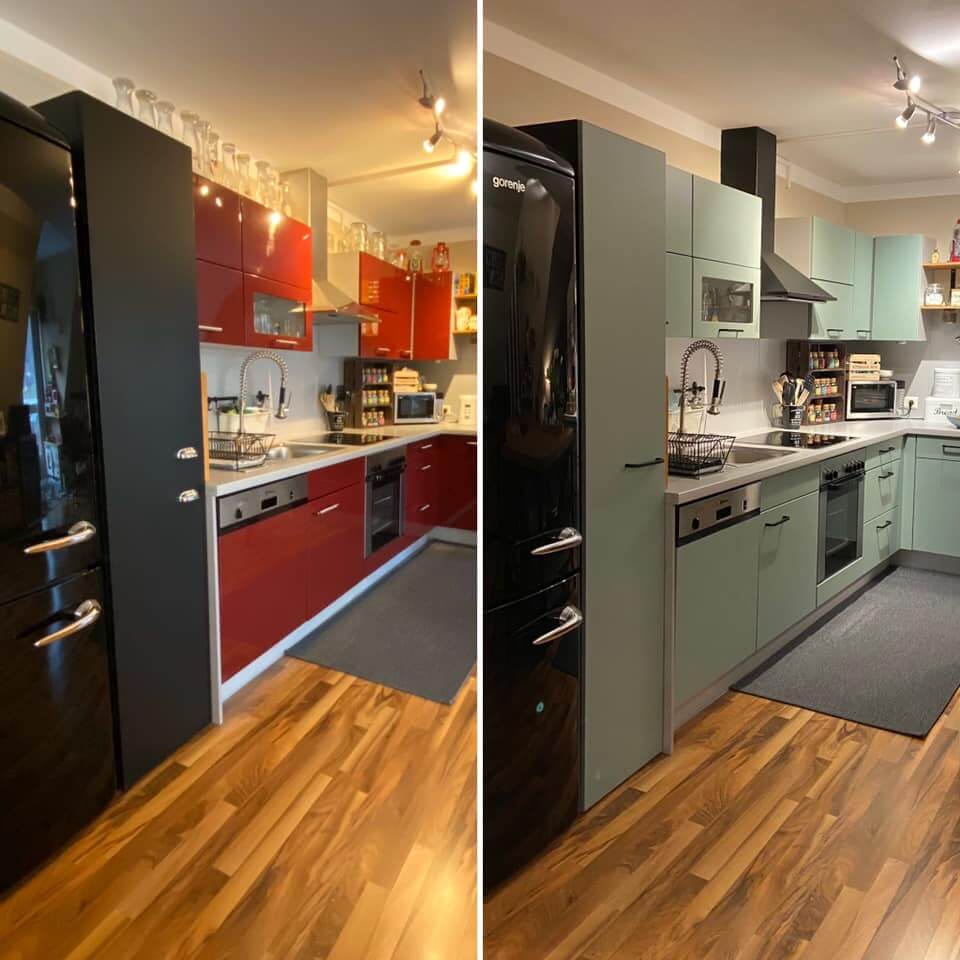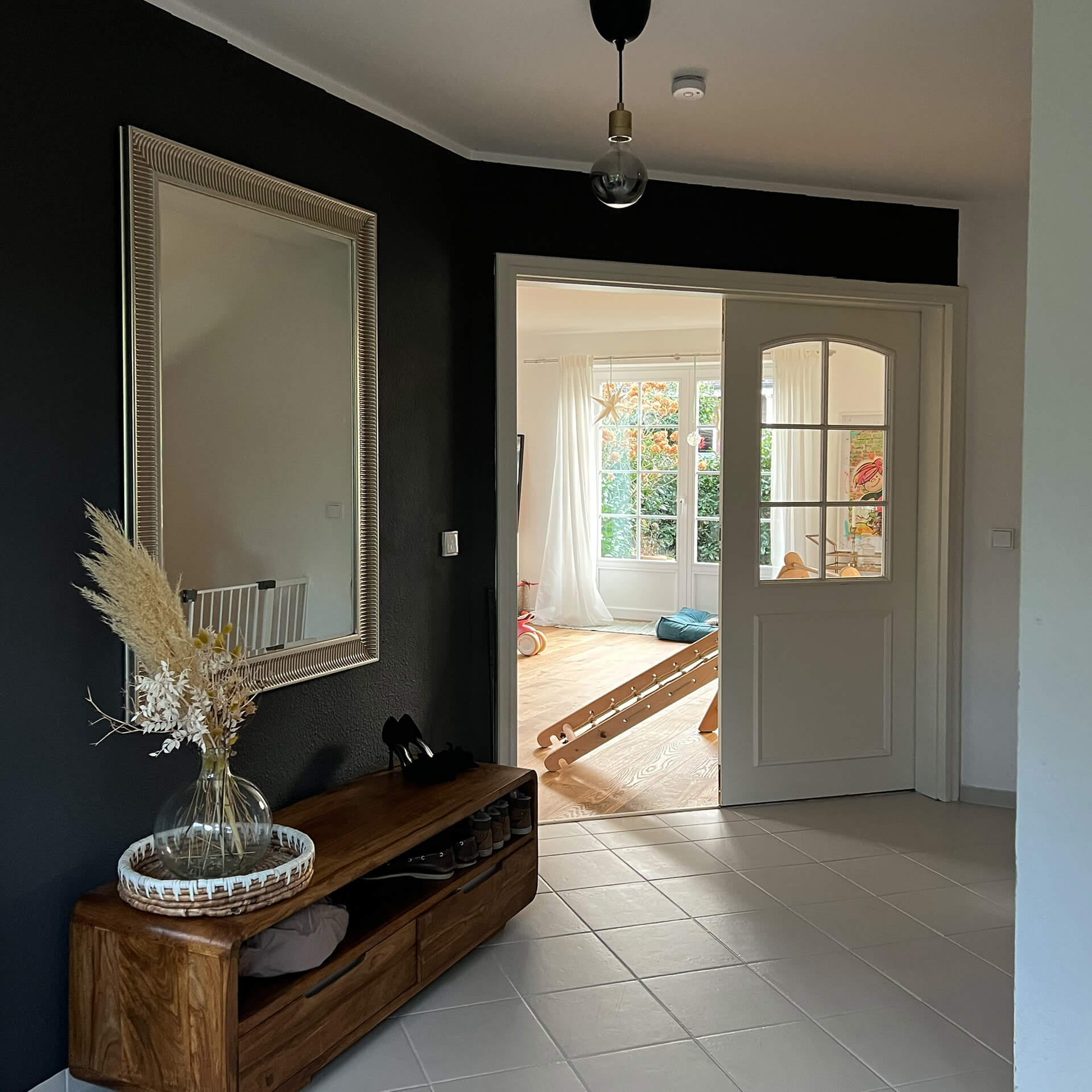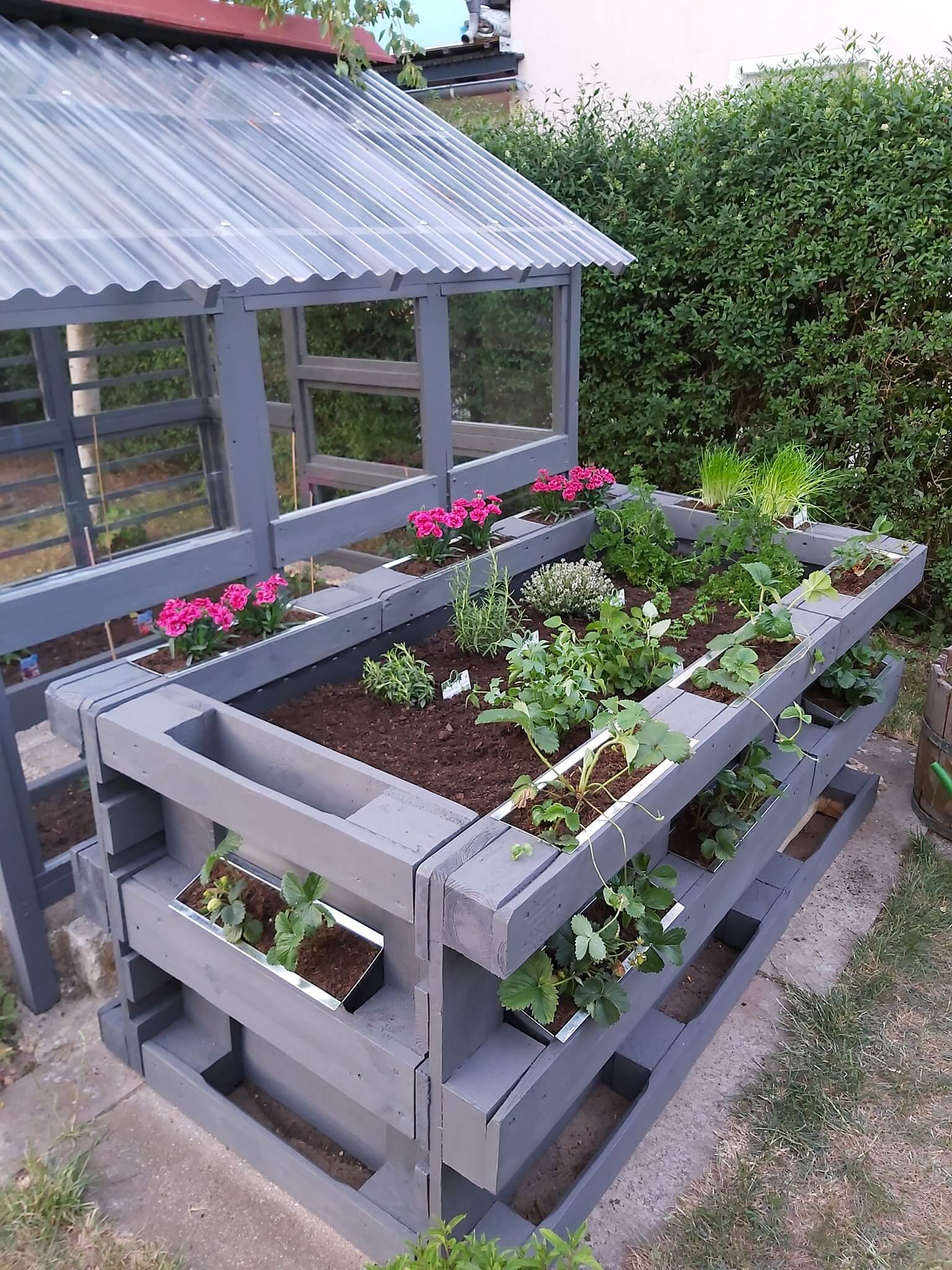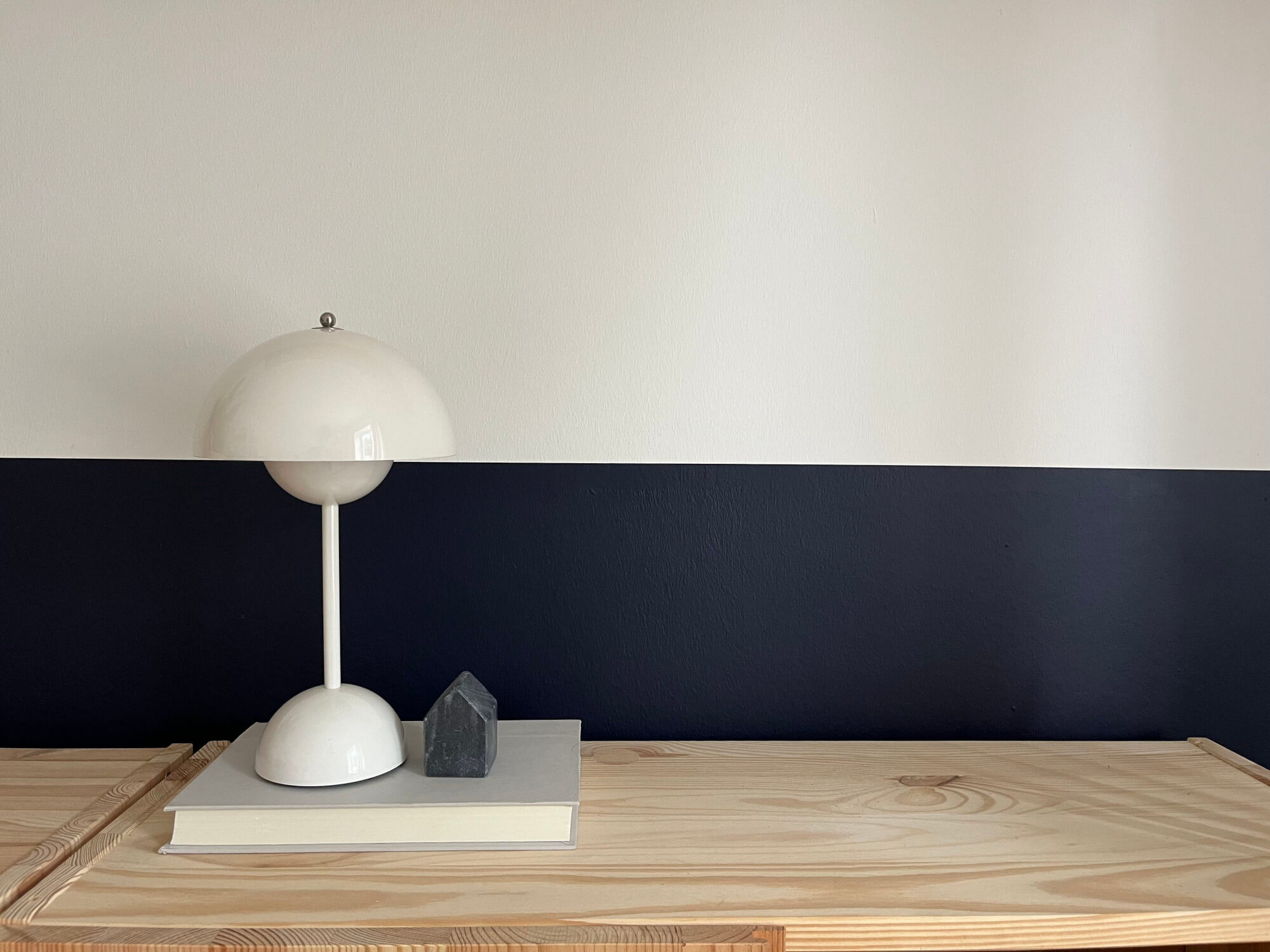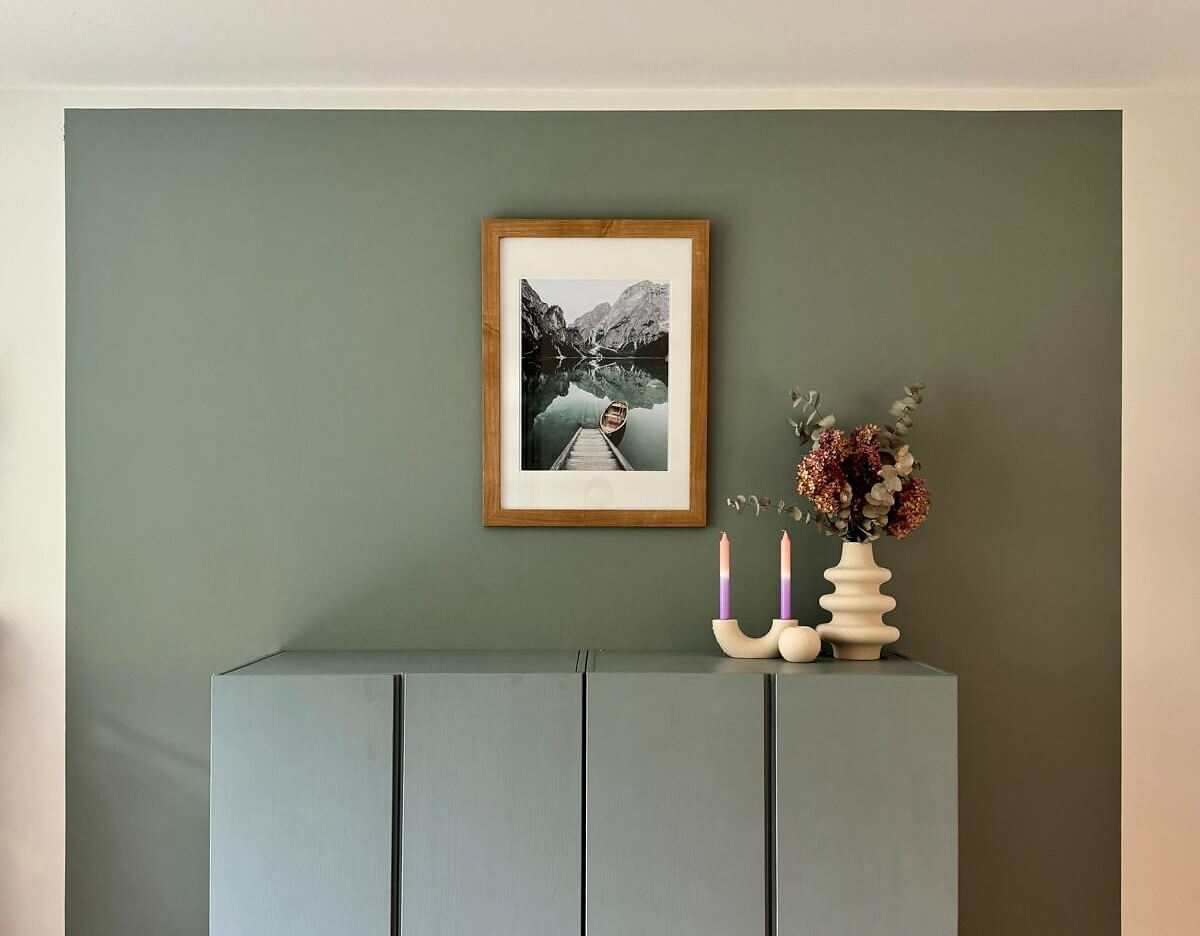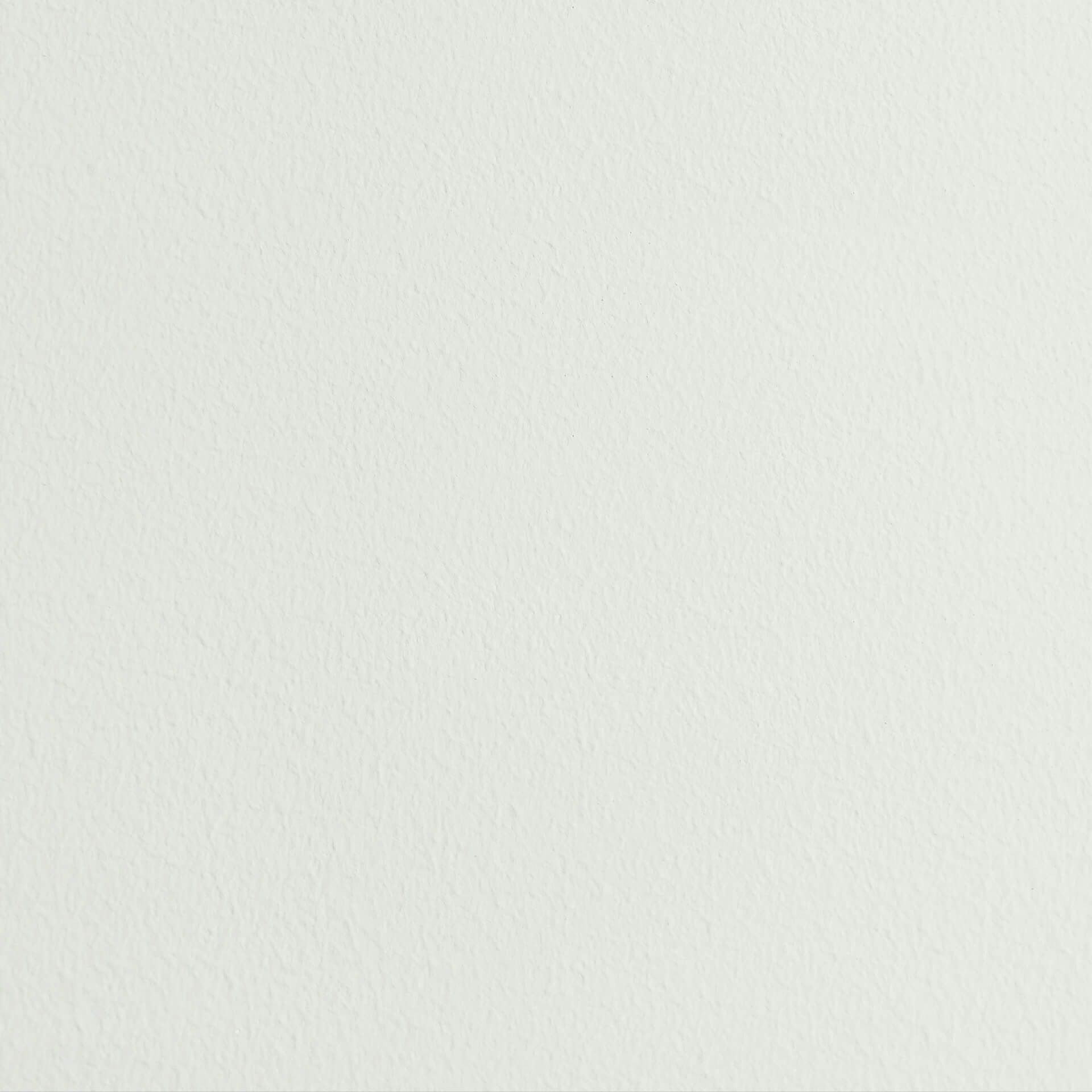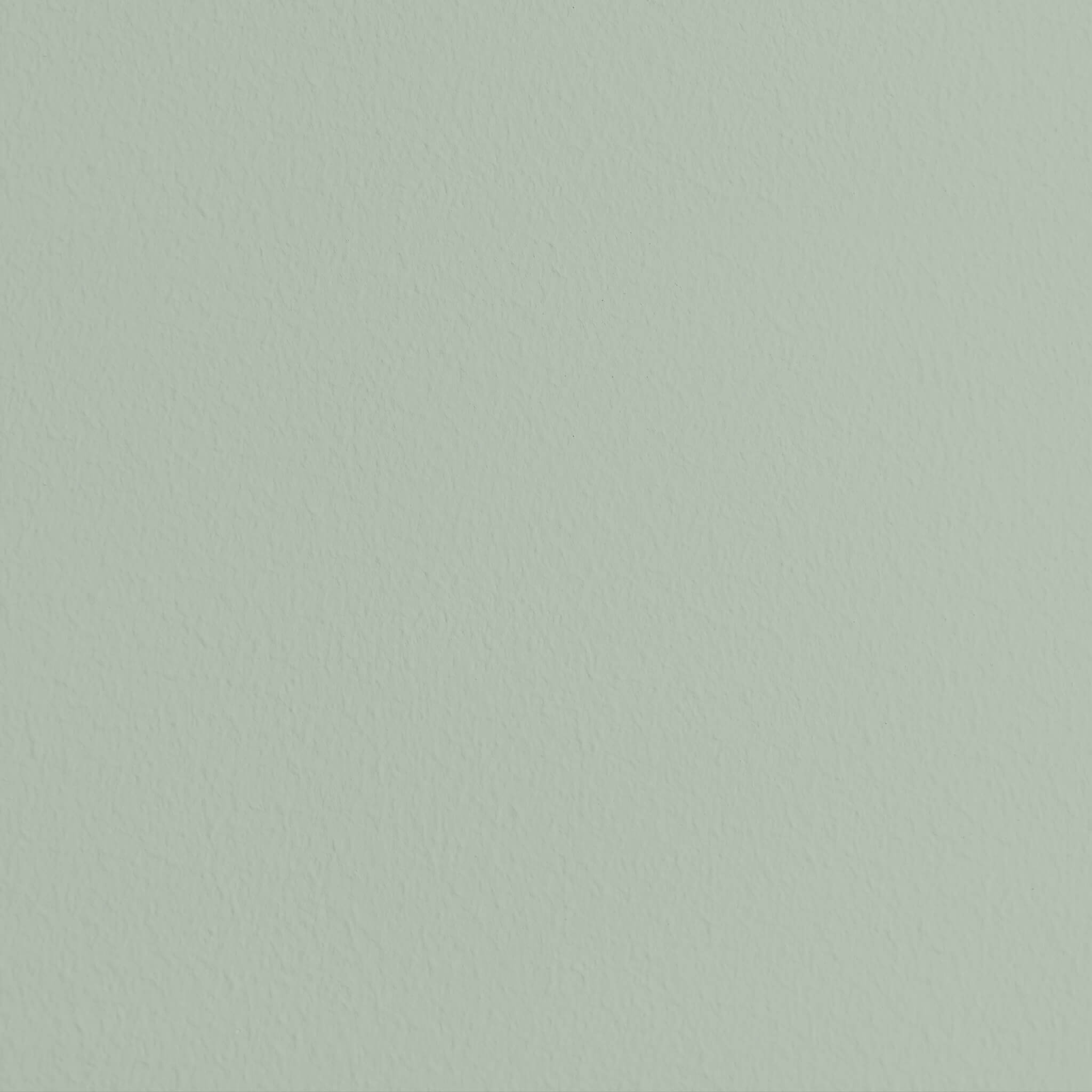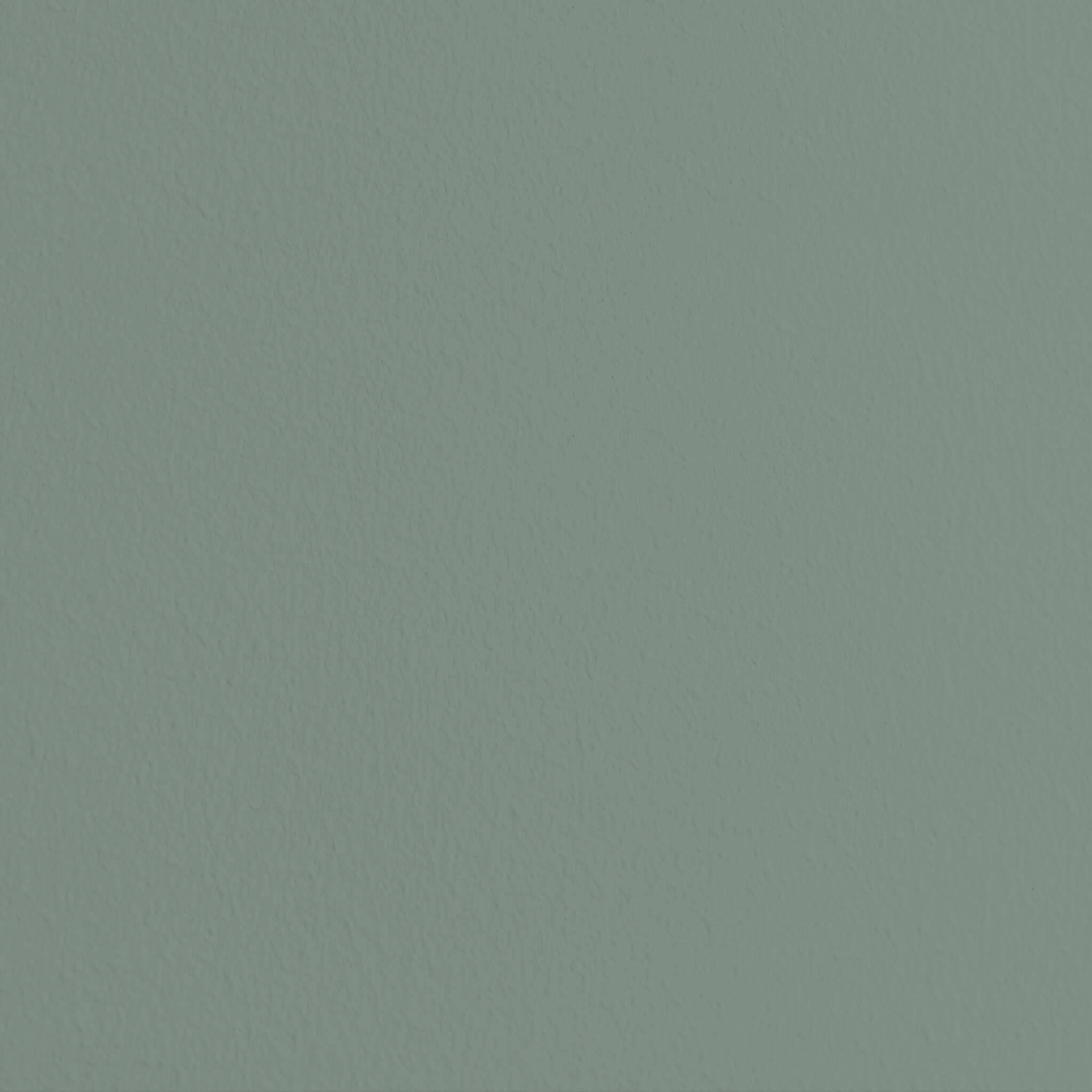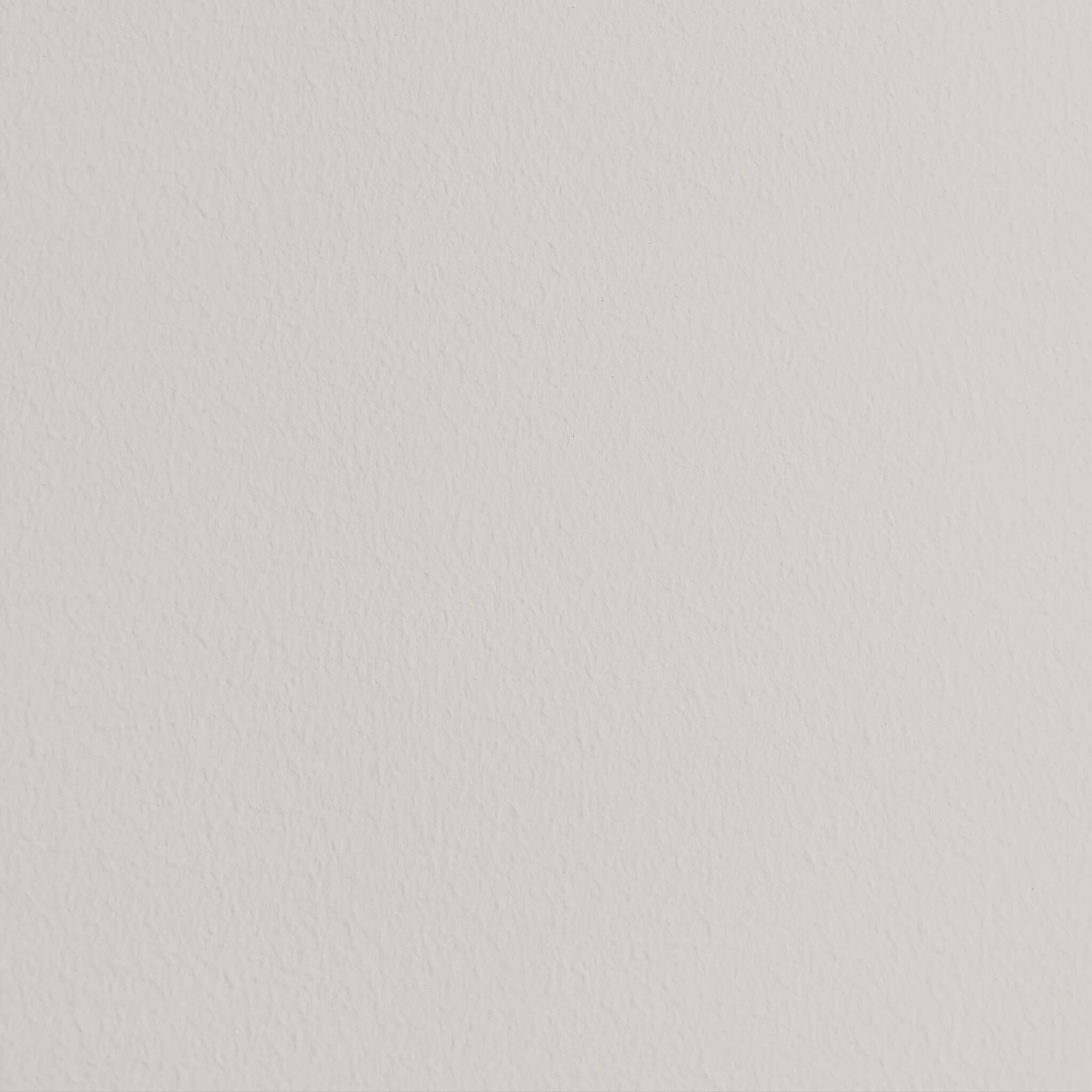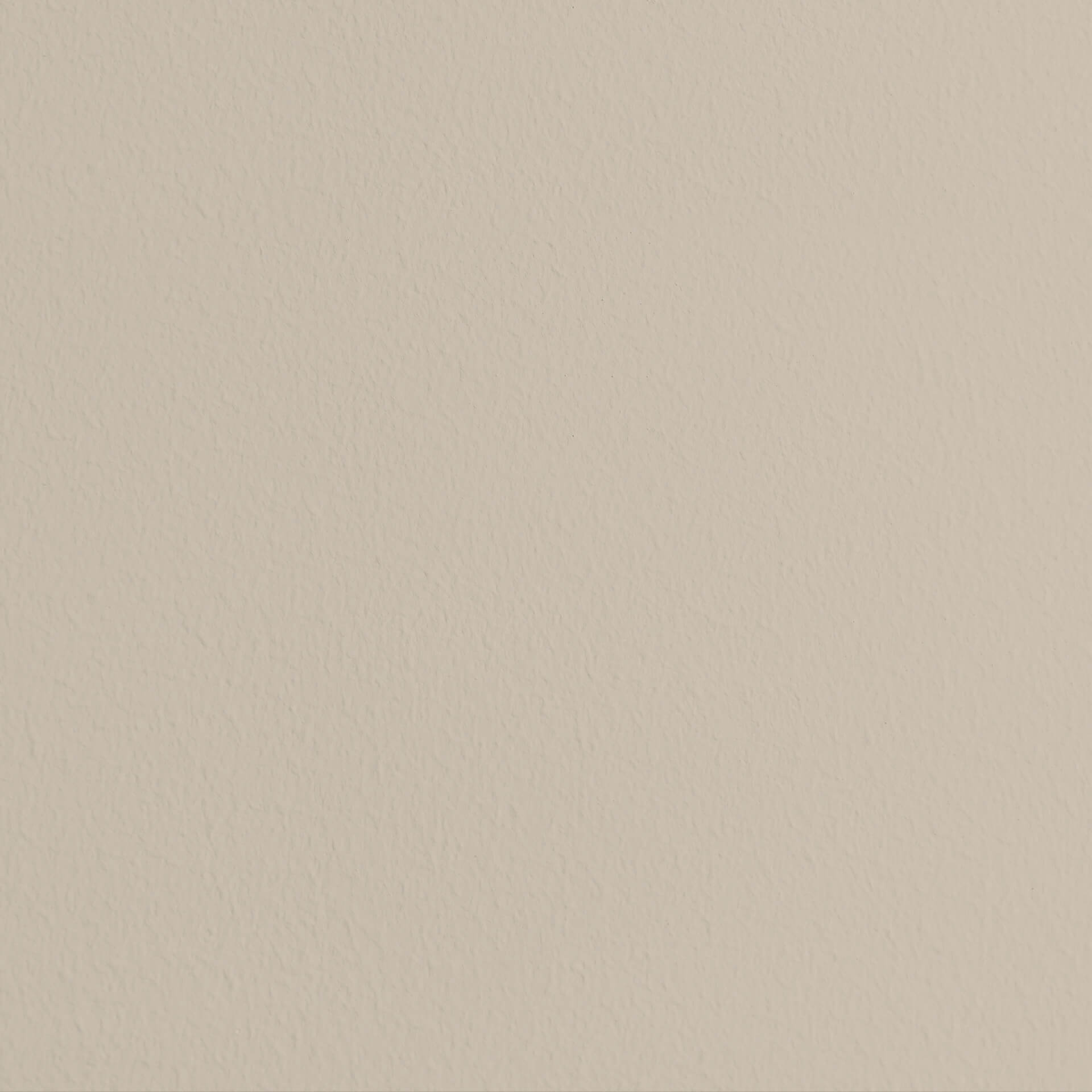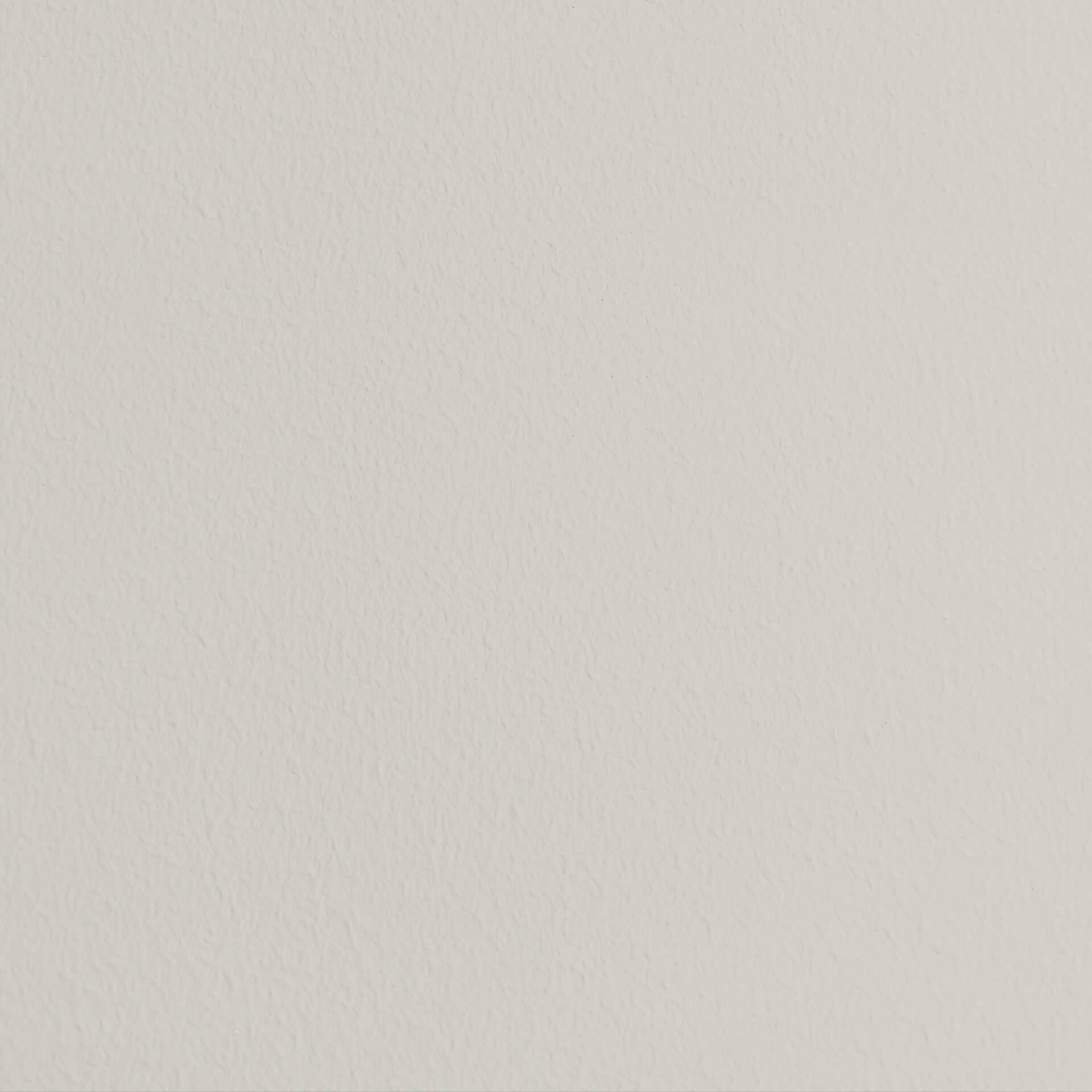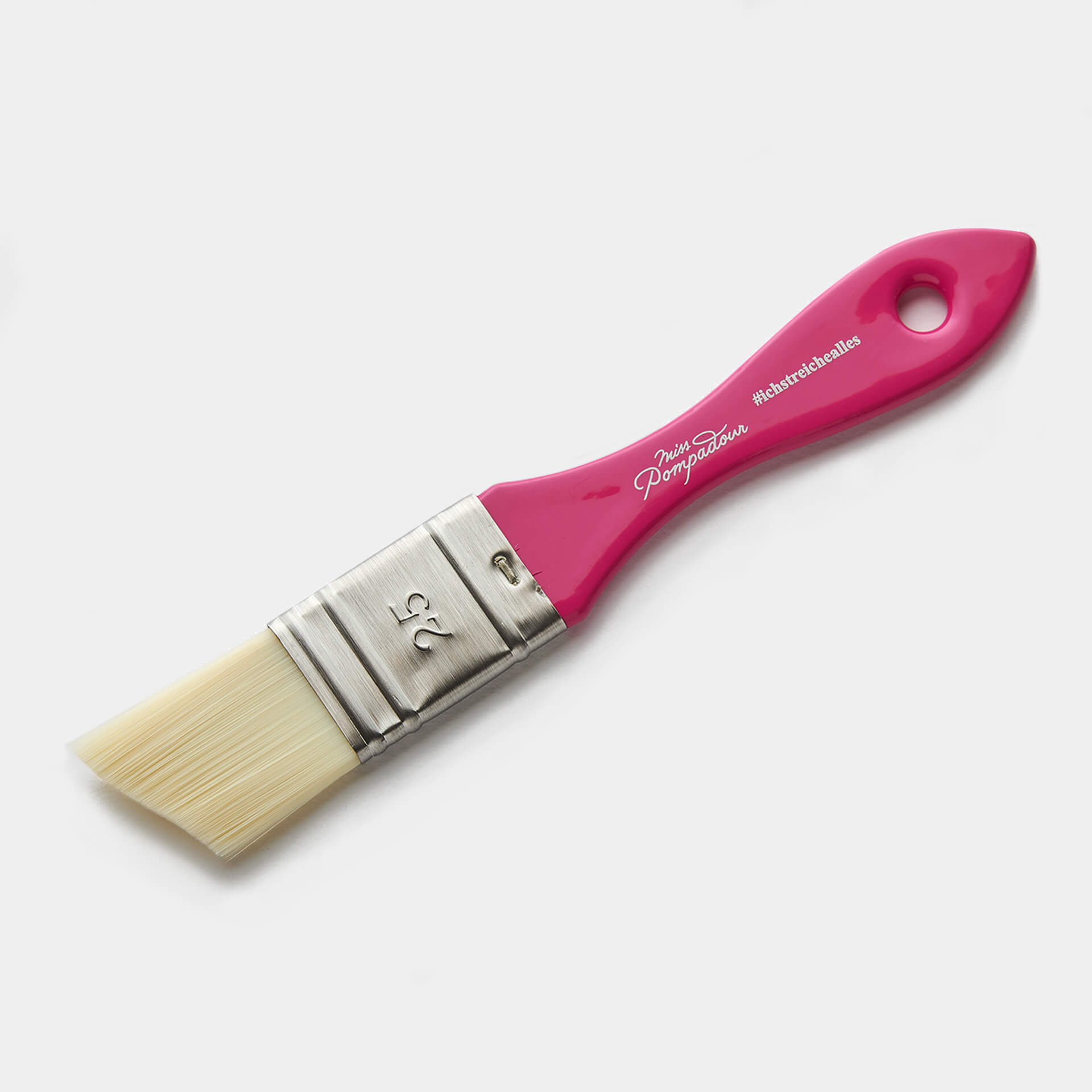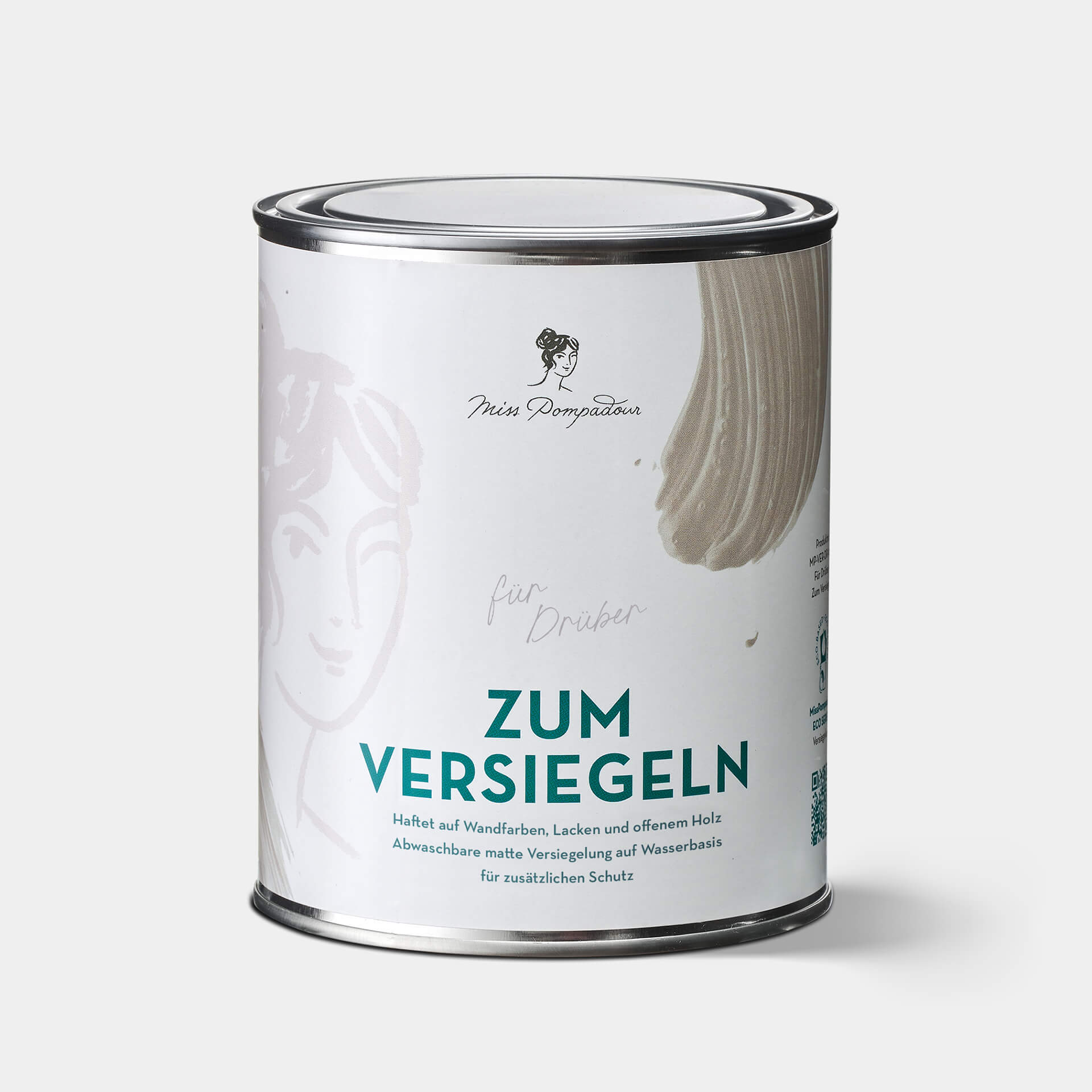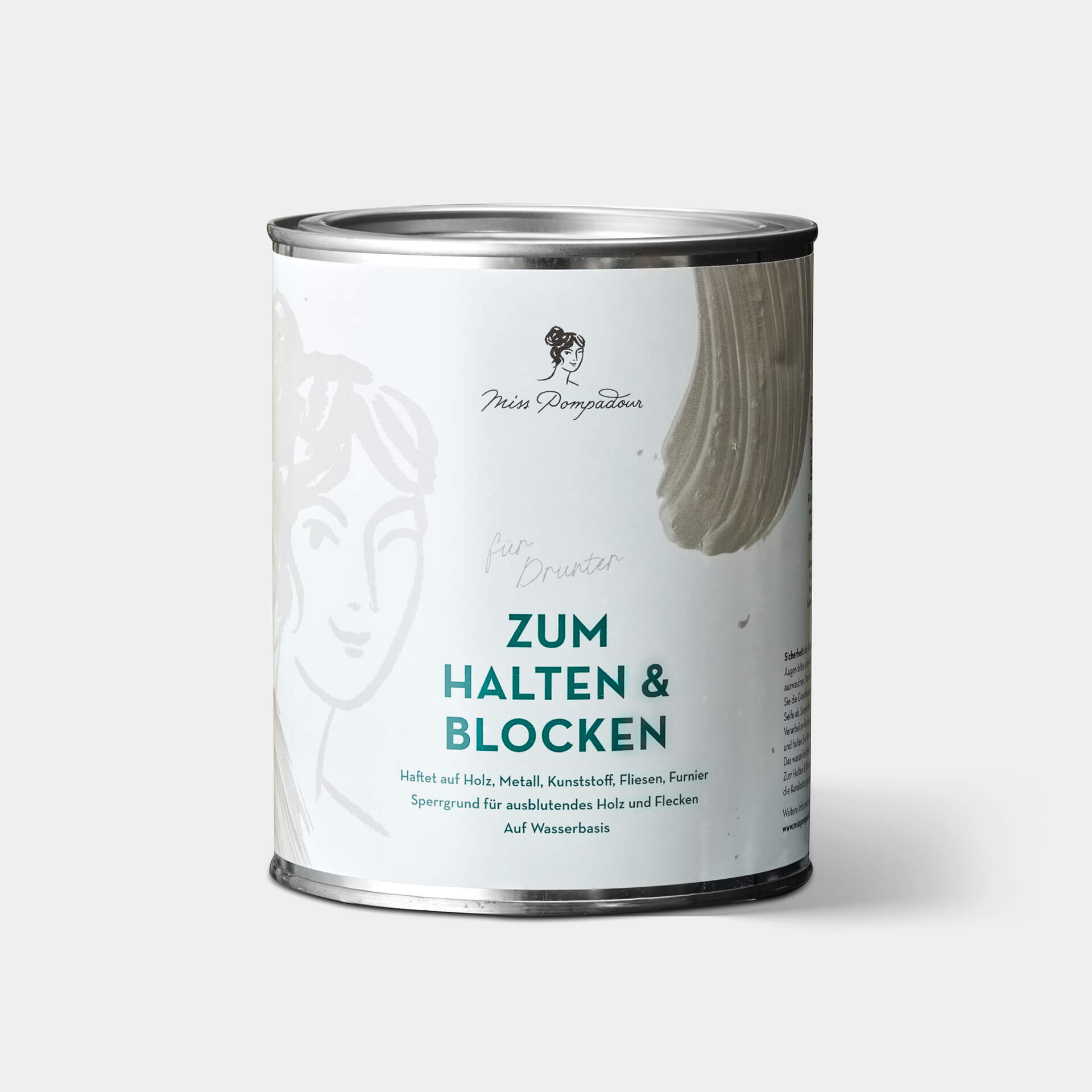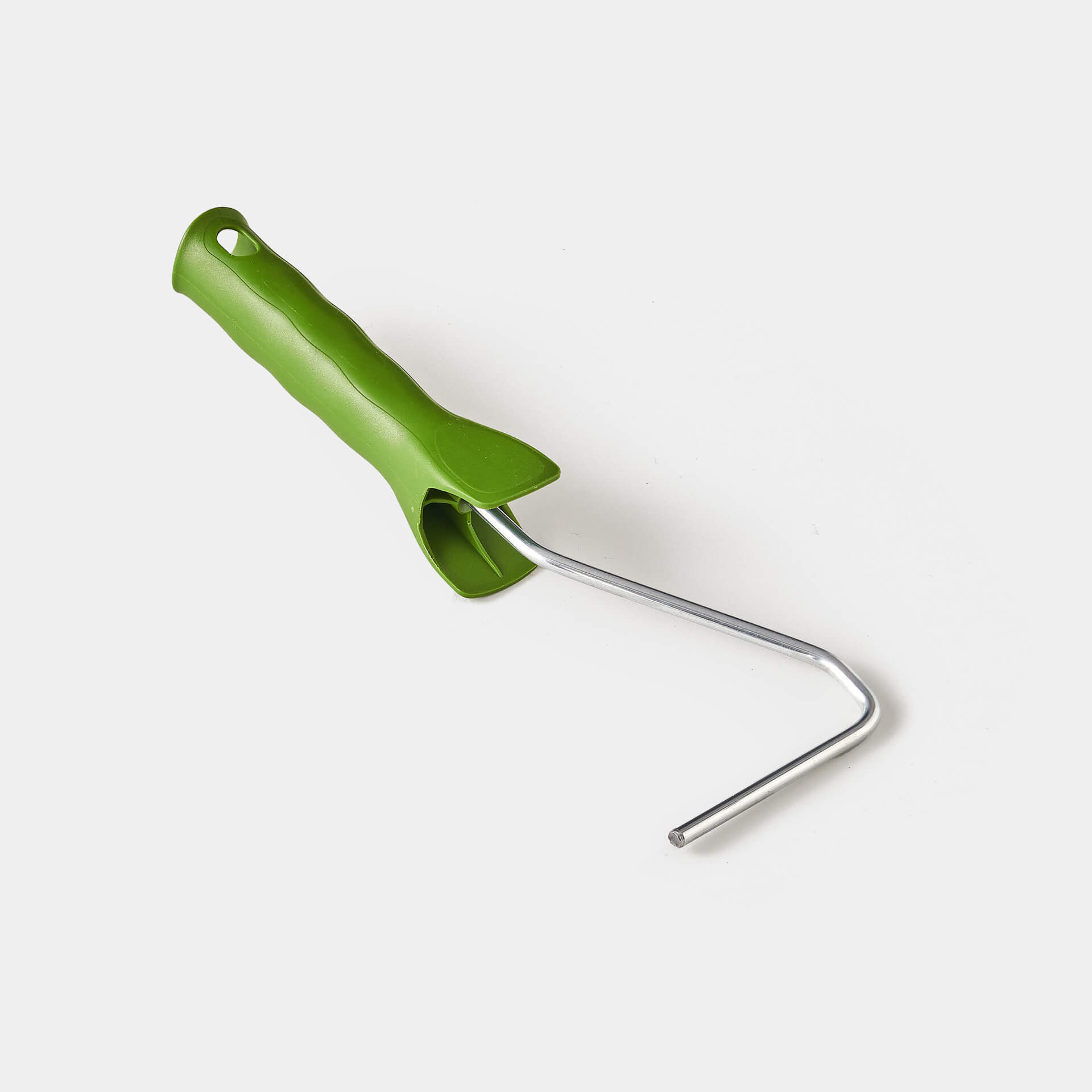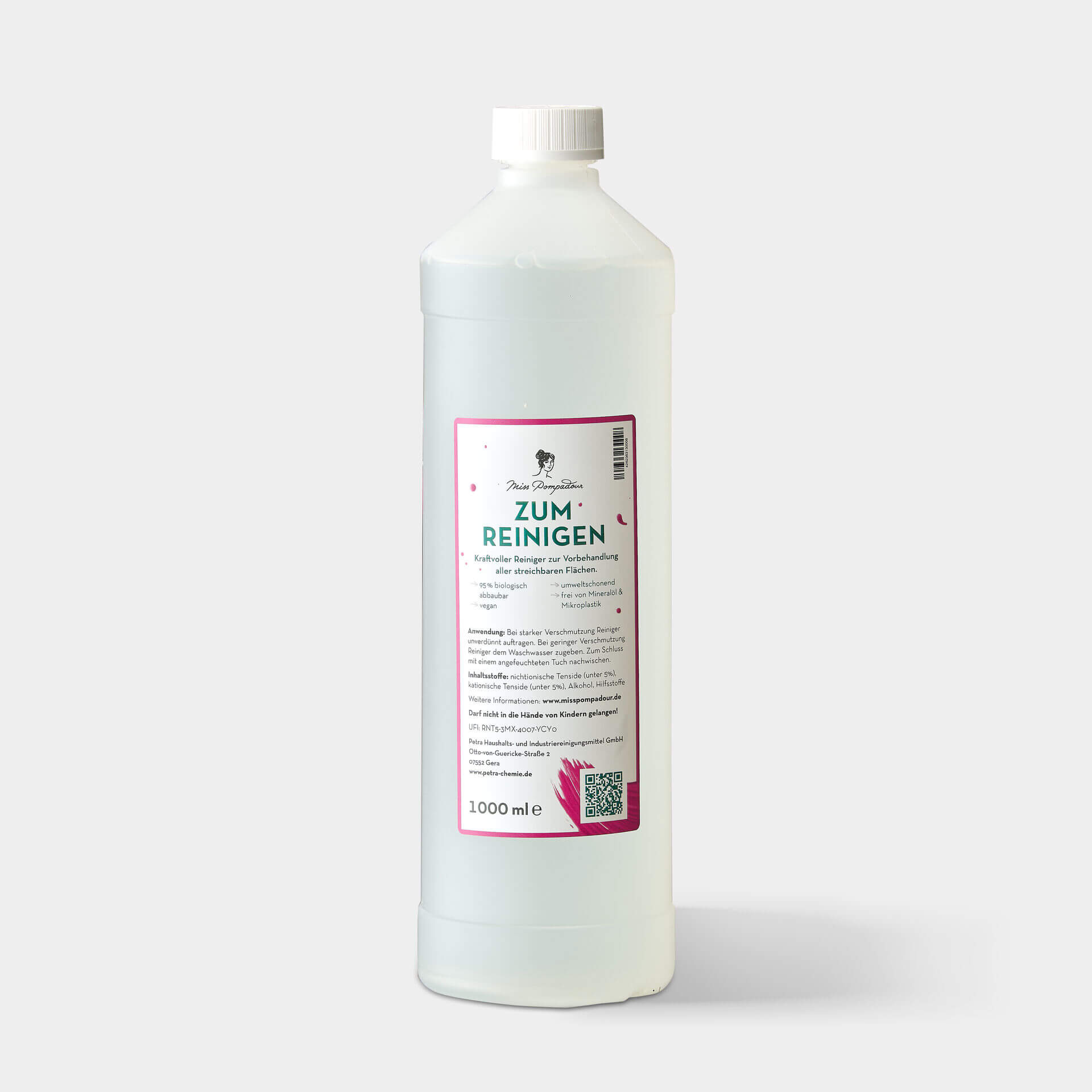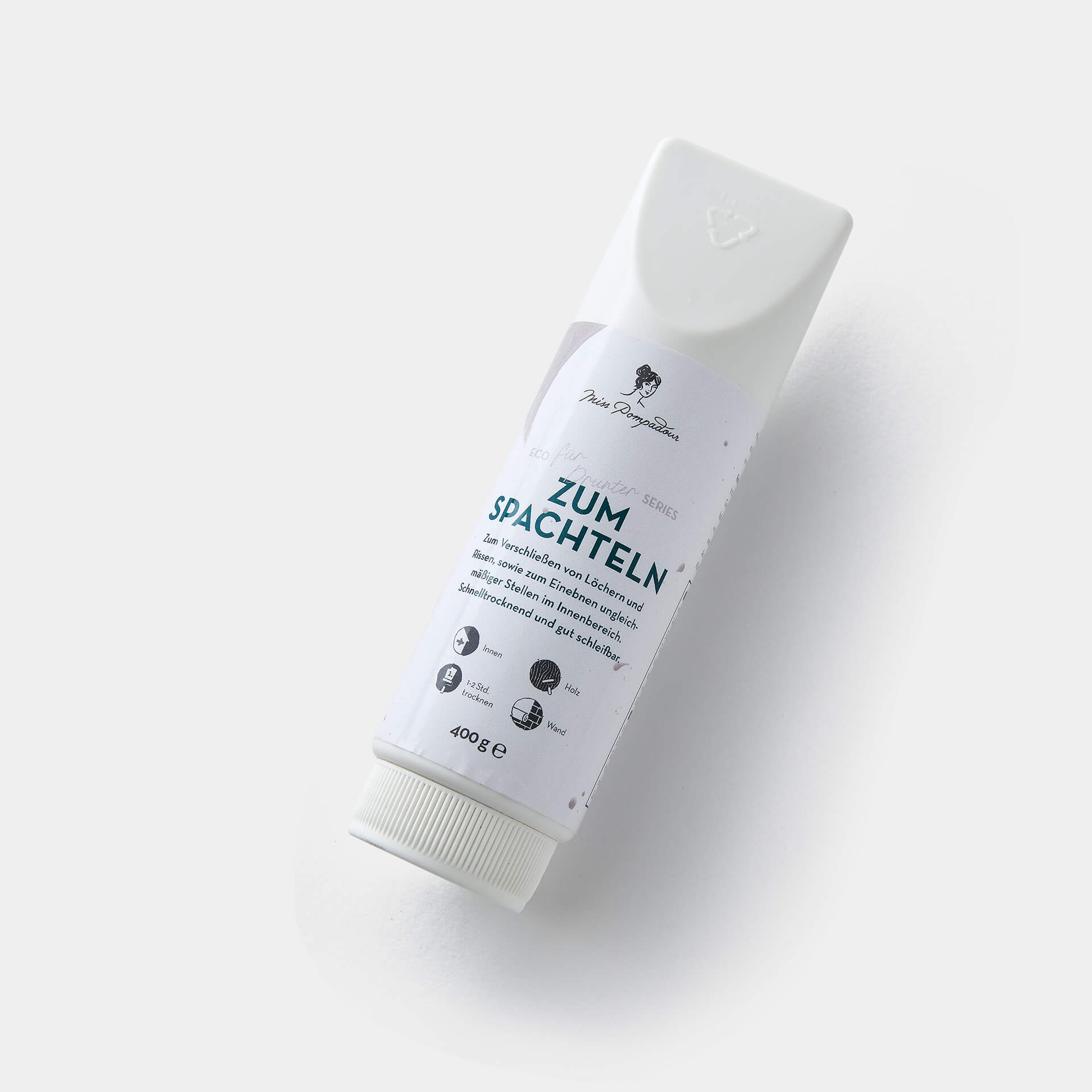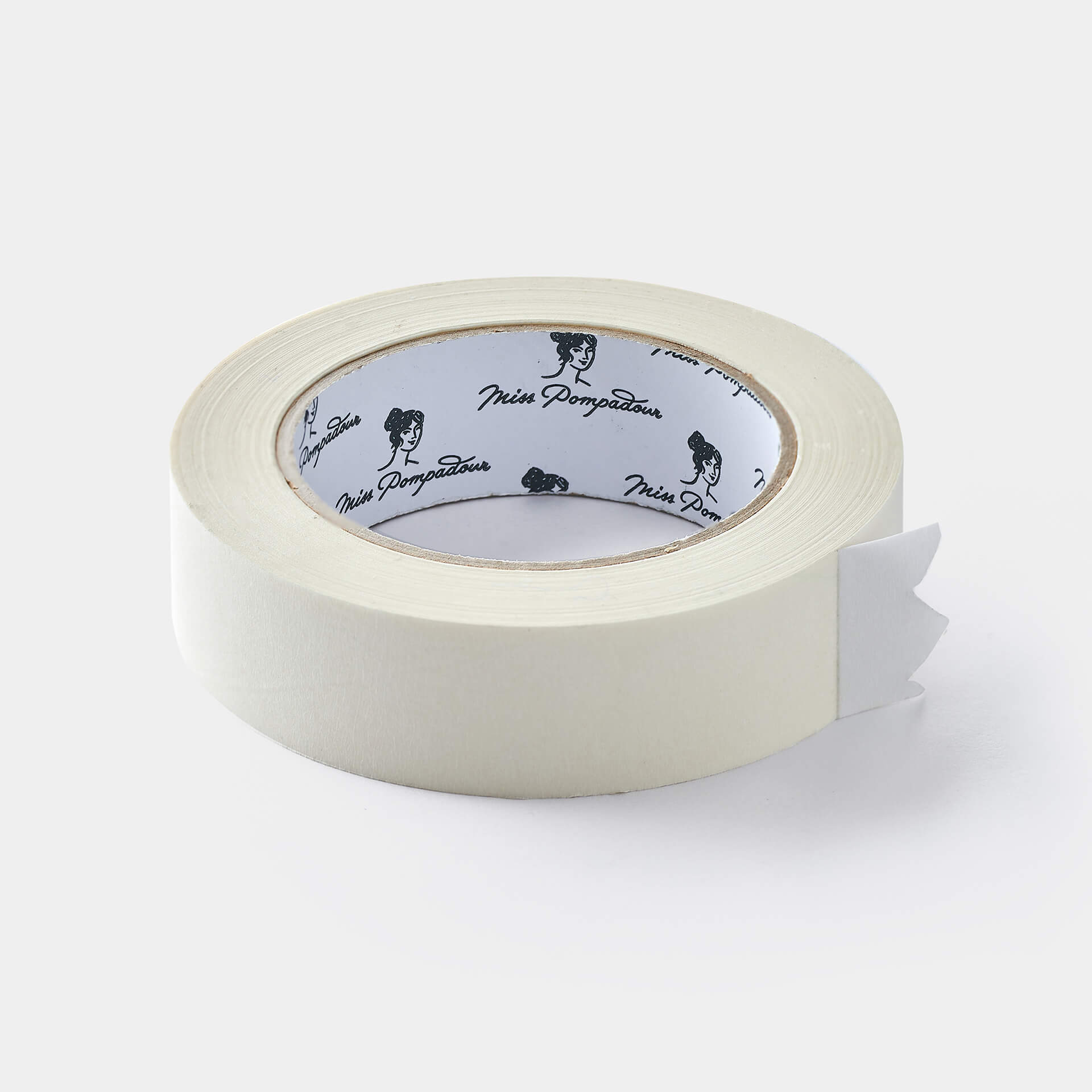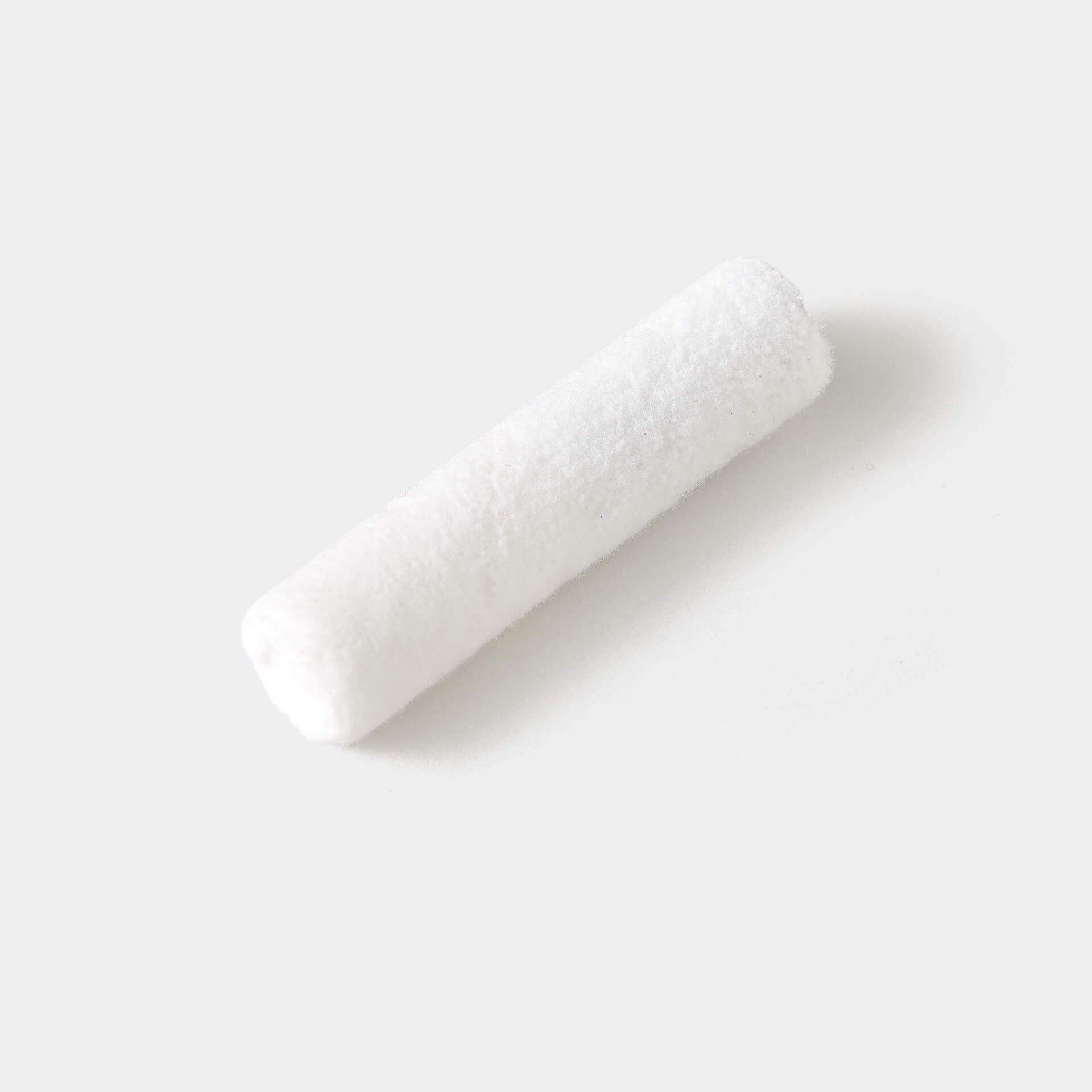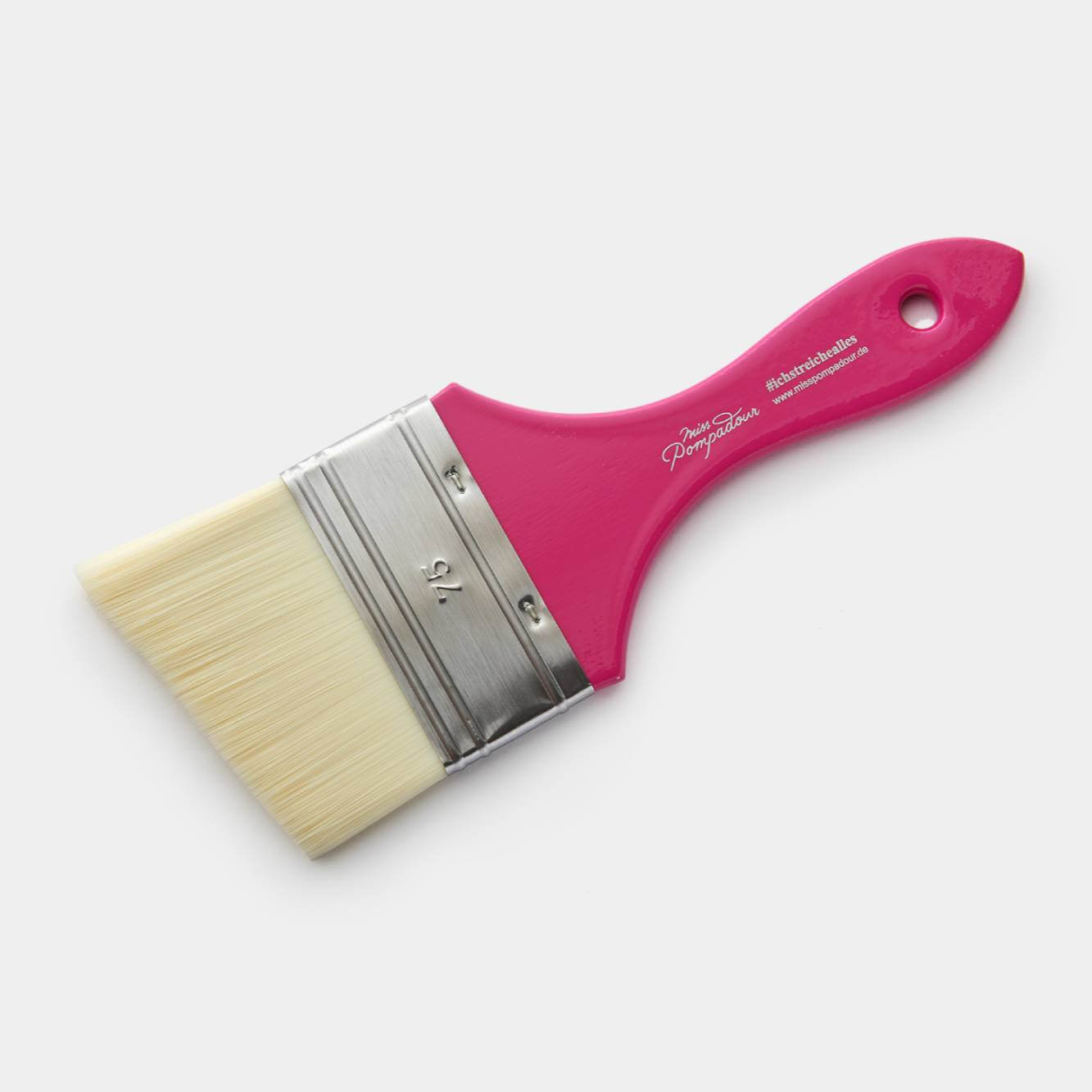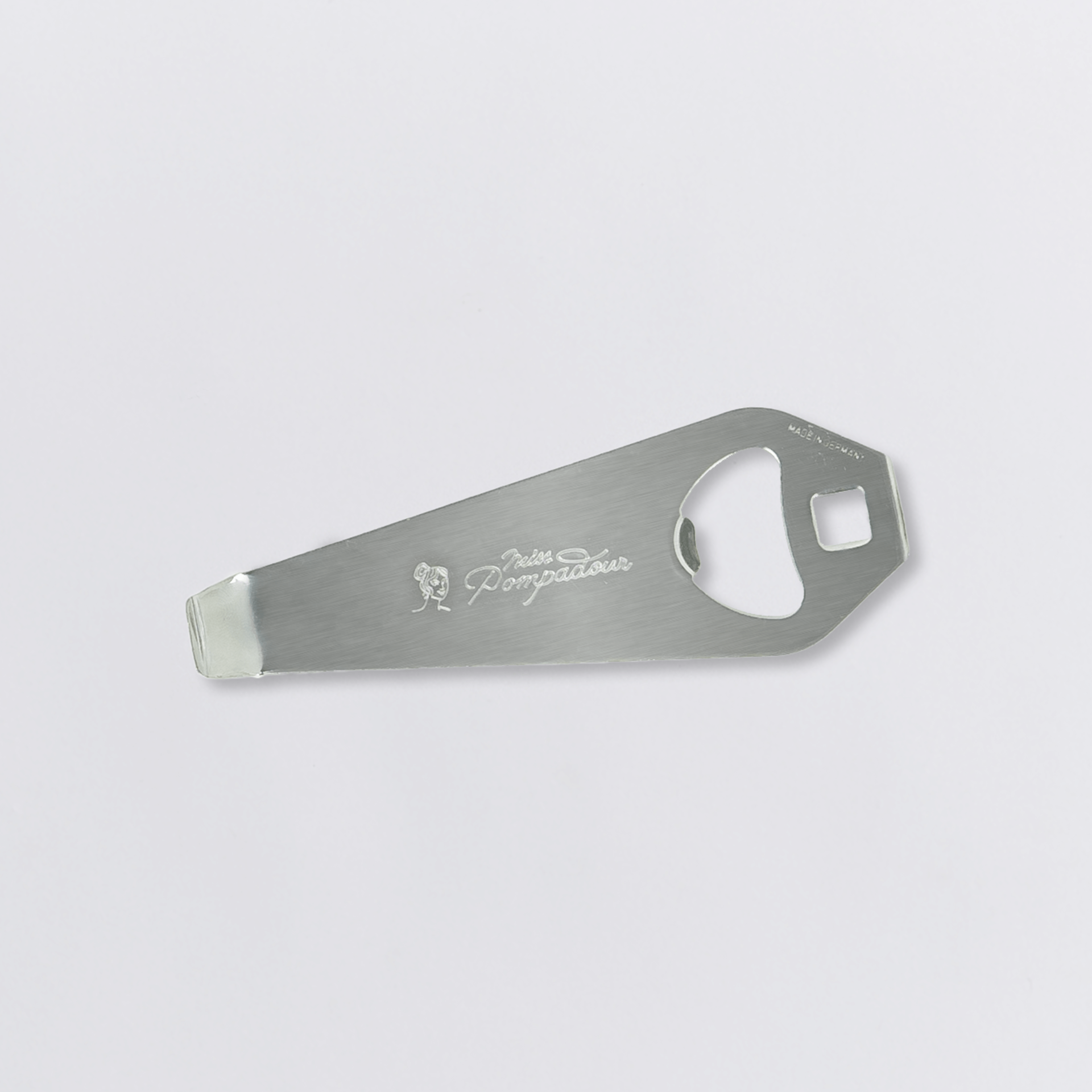You Want to Paint Your Kitchen? Here's How!
In Painting - How-To · 12 min reading time
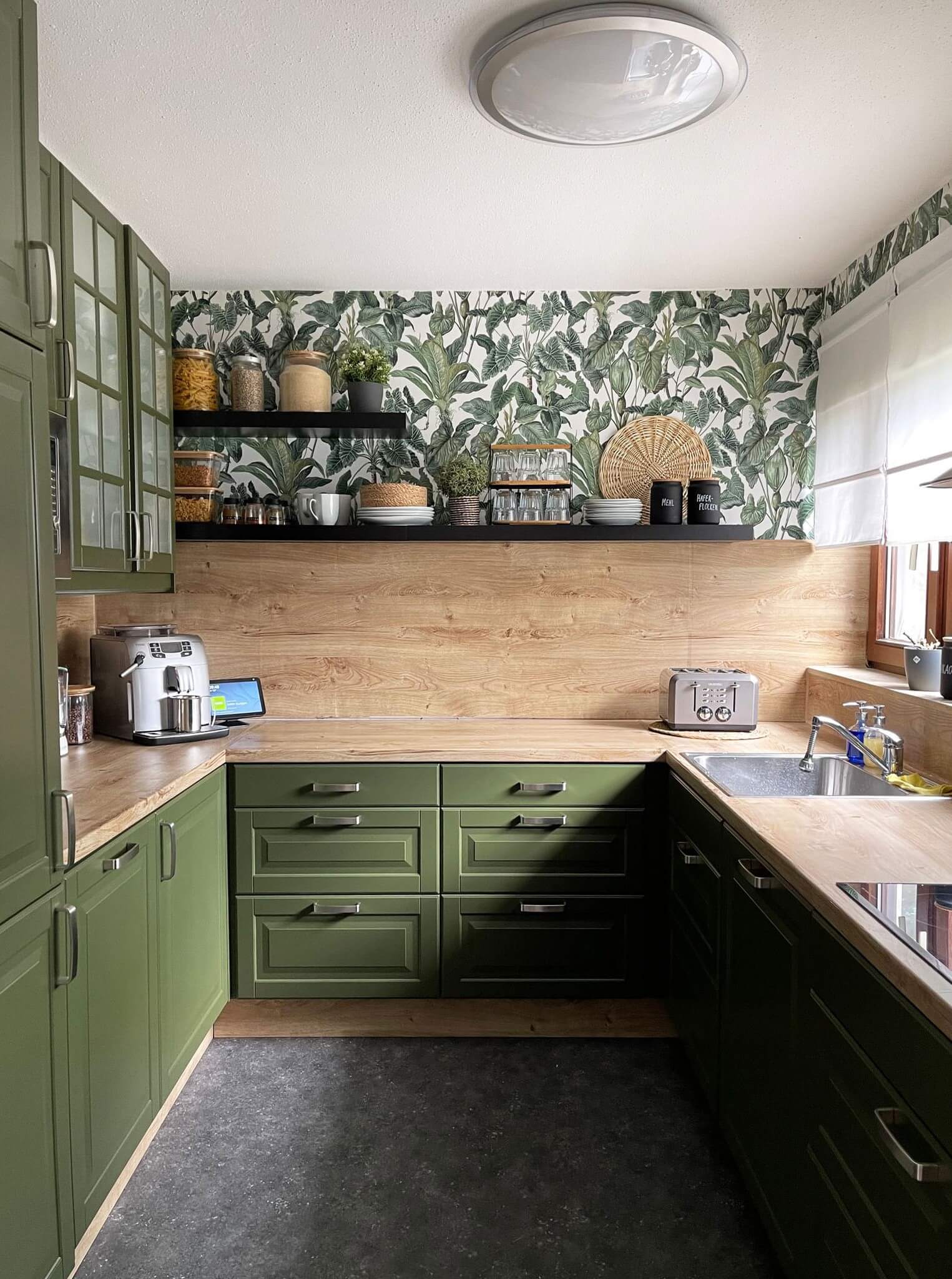
Table of contents
You've had your kitchen for many years. And it's technically in perfect order, all the drawers run silently. Every item has its place and you can find everything you're looking for at the flick of a wrist, even when you're asleep or in the dark at night. Does it just leave something to be desired visually? Then just paint it!
Painting kitchen furniture: Before/After sample photos from our customers
Step-by-step guide: How do I paint my kitchen?
Step 1: Choose a varnish
Step 2: Prepare the kitchen
Step 3: Clean the kitchen
Step 4: Prime the surfaces
Step 5: Painting the kitchen
Step 6: Sealing
How do I choose the right colour for my kitchen?
What colour suits my kitchen?
Our chalk paints also look great on your kitchen fronts with their powdery, velvety surface. Choose from the beautiful colour shades in the CosyColours collection. Please note that chalk paints are not as durable as Eggshell Varnish and should therefore always be sealed.
Frequently asked questions about painting the kitchen
1. Can I just repaint my kitchen?
Can you paint a fitted kitchen?
Yes, you can paint a fitted kitchen with furniture paint. In most cases, these are still perfectly good quality, they just no longer look good. And because our paints are so easy to use, you don't necessarily have to dismantle the kitchen To Paint.
Can you paint a plastic kitchen?
If you have a kitchen made of plastic veneer or laminated fronts, you can prime with MissPompadour To Bond & Block. This will give you a non-slip base for your paint and also ensure that the varnish adheres well. You can find out how to do this in detail in our blog on "Painting high-gloss furniture"!
Can you paint a wooden kitchen white?
Wooden kitchen fronts are also very easy to paint. The classic rustic oak kitchen should be primed with MissPompadour To Bond & To Block. Kitchen cabinets made from softwoods and tropical woods also require a primer. Otherwise, the wood may discolour your varnish if the original topcoat is no longer in top condition. If you are painting your beech kitchen, you do not need a primer. You can find out more about painting wooden furniture in our magazine on painting wooden furniture.
Can you paint any kitchen front?
We can't really think of any kitchen surface that can't be painted. Plastic, melamine, foils, high gloss, wood decor, wood veneer, solid wood, metal decor... #justpaint!
It might be difficult with modern materials with a lotus effect, you'll have to try it out.
Can I paint kitchen cabinets without sanding?
Yes, as a rule you don't have to sand the cabinets before painting them. However, if the kitchen has already been badly damaged and an old coat is flaking off in places, you should at least sand the relevant areas smooth. You can use a sanding pad or a finer sandpaper.
2. Around the kitchen
Can I also paint my tile backsplash?
You can also paint the tiled splashback directly. Conveniently, the same varnish qualities are suitable for this as for the kitchen fronts. The MissPompadour Eggshell Varnish varnishes are particularly suitable. For smooth tiles, use To Bond & Block to create a good surface. Behind the cooker or sink, you should apply an additional protective layer with To Seal. You can find detailed information on beautifying your tiled splashback in our article Painting tiles.
How can I paint the adjacent walls to protect them from dirt?
If you also want to change the wall in addition to your kitchen furniture, you can use the wall paints from MissPompadour, for example. Choose The Valuable Wall Paint for a matt finish in low-traffic areas. The Functional Wall Paint is particularly suitable for areas exposed to dirt, such as behind the bin, as it is perfectly washable. Despite their matt finish, they offer a smooth surface.
Can I also paint the kitchen worktop?
In principle, you can also paint a kitchen worktop. Plastic and stone worktops are best primed with MissPompadour To Bond & Block. Then you can paint with the varnish in the colour of your choice. MissPompadour Eggshell Varnishes are particularly suitable. The easiest way to achieve a beautiful result is with a paint roller. You can either apply one more coat or finish with To Seal.
Please note that a painted worktop is never as robust as an unpainted one. A worktop is often subject to very heavy loads. Moisture around the sink should always be absorbed immediately, and a chopping board is essential if you are cutting something. Light colours can also be subject to discolouration and very dark colours are susceptible to limescale stains or stains from cleaning agents. Whether you paint your worktop should always be considered carefully and certainly depends to a large extent on how passionately you use your kitchen.
Pro tip: Why not just paint the front edge of your worktop? This will bring about a visual change without compromising stability. This is often enough to make the old worktop look brand new and fresh.
3. Painting the kitchen: What do I need to consider?
Do the colours actually smell strong?
Our paints are very low in odour and after a few days you will no longer smell anything. Good air exchange during painting and drying is always useful.
Paint or varnish kitchen fronts?
If the fronts of your kitchen cabinets are smooth and without trim, you can easily paint them with the roller. Simply use the varnish roller. If, on the other hand, your kitchen fronts have many ornaments, we recommend using the fine MissPompadour brush. Thanks to its bevelled end, you can reach all corners without having to mask them and can also paint narrow areas without any problems.
Of course, you can also spray your kitchen fronts with our colours. Please follow the instructions on dilution for the selected colour.
Do I have to seal or can I do without?
The sealer is an additional transparent protective layer over the colour varnish. Most of our customers paint with the stable varnish qualities without sealant with super resilience. If things are very turbulent in your kitchen, then seal again with To Seal.
Brush or roller - Which painting tool do I need?
All corners and edges, as well as mouldings or recesses are easily painted with our fine MissPompadour brush in 25 or 50 mm. You can then paint surfaces with the varnish roller for water-based varnishes. Make sure to work as wet in wet as possible. For example, pre-paint the trims of a front with the brush and then roll the corresponding surfaces. This way you will get an even result.
How do I clean my painted kitchen?
To clean painted furniture, you can use a normal kitchen cleaner. Please check whether it is suitable for painted surfaces; this is indicated on the label. Do not use chlorine-based cleaners or alcohol-based disinfectants. It is also better not to leave strong acids on for a long time. By the way, our To Clean is also a great cleaner for after painting. Please avoid microfibre cloths and use normal cotton cloths instead. Microfibre can finely abrade the surface and damage the paint layer over time.
Video Tutorial: Big Kitchen Makeover | DIY | repaint old kitchen
Accessories and recommended products to paint your kitchen
- Screwdriver to remove the handles. This saves you having to mask them. Put the finishing touches on your kitchen with new handles.
- Cleaning bucket and cloth: Thorough cleaning of all surfaces to be painted is essential for a perfect result.
- Maskingtape: It is best to remove the masking tape when the paint is not yet dry, so you get a clean edge. Please also read the instructions in the FAQs.
- plastic drop cloth or newspaper: Use this to protect the areas that should not get any paint.
- Brush, varnish roller and paint tray: It is best to pour the varnish or chalk paint into the paint tray. Paint corners and edges with the brush and surfaces with the varnish roller.
- Sandpaper or Sanding Pad: To be on the safe side, it is a good idea to have something to sand with. This way you can easily touch up small blemishes like noses and continue working.
Finished reading yet?
Here you will find more exciting topics
Your new kitchen colour
A selection of the most popular colours
Your tools and accessories
How to make your kitchen perfect
Content: 0.4 Kilogramm (€24.75* / 1 Kilogramm)

